The 1980s was an innovative and exciting time for British children's television. Technology was slowly starting to make its mark felt, pop music was exploding like never before and the dawn of Channel 4 meant there was even more opportunity for children to be catered for. And all it takes is a quick Google of "British children's TV in the 1980s" to see that programmes such as Pigeon Street, Saturday Superstore and Button Moon were, indeed, magnificent.
But there was much more for children to be tuning into than just these three shows. And much of it, well most of it, is now forgotten. Most of us have moved on and replaced these programmes in our memories with the bureaucracy of adult life. Thankfully, Curious British Telly is here to rectify this lack of recall. And that's why we're going to take a quick (actually... a very long) look at 159 British children's TV shows from the 1980s you forgot about.
N.b. To make this list, a programme's original broadcast had to come solely between 1980 - 89, anything which started or finished a millisecond either side of the decade was not eligible.
P.s. Many of the programmes on this list have little to no footage online, so please get in touch if you have old video tapes with 'unseen' footage on. Hopefully, we can get it online to provide a better representation of the programmes.
1. Bric-a-Brac
BBC1
1980 – 1982
By 1980, Brian Cant was an established legend of children’s television. But this didn’t mean he was about to rest on his laurels. Bric-a-Brac was part of the lunchtime See-Saw schedules and found Cant playing an elderly shopkeeper in a dusty, old bric-a-brac shop. A classic example of repackaging education as entertainment – helped by the deft hand of producer Michael Cole – Bric-a-Brac was an exercise in phonetics.
Each episode looked at a particular letter with its phonetic sound being matched to all manner of objects dug up within the shop. So, for example, in the G episode, the shopkeeper looked at a gold chain with a garnet which belonged to his grandma Grace (a bit of a gadabout) who wore it as a girdle. And, in the W episode, we learned that you wear a woggle to keep your windpipe warm. You get the general idea. A total of 13 episodes were produced, each lasting for 10 minutes, over the course of two series.
2. Puzzle Trail
BBC1
1980 - 1984
A fiendishly tough, yet engagingly interactive game show, Puzzle Trail ran for five series on BBC1 and set a different puzzle each series for the viewers to try and solve. Episodes ran on consecutive school evenings and gave the viewers the chance to write in with the solution and win a special prize. Clues were dispensed to the viewers through a series of sketches and discussions featuring various characters.
The first series of Puzzle Trail was hosted by Donna Reeve and Andy Johnson as they tasked viewers with identifying a square on a map to uncover hidden treasure. Series two changed things up with Tommy Boyd as presenter, Boyd had lost a mystery object and was retracing his steps to find it. Boyd was back in series three where OS map reading skills were needed to track down the exact location of the hidden treasure.
Series four was fronted by presenters Kirsty Miller and Howard Stableford; this time, the viewers had to hunt down a criminal in Puzzletown who had stolen a set of secret plans. Finally, Davy Jones (yes, of The Monkees) and Eileen Fletcher took part in The Riddle of Skull Island for series five, this involved tracking down a specific point in a building.
3. Watch All Night
ITV
1980
Granada Television brought this Sunday teatime thriller to our screens in the summer of 1980, with seven episodes broadcast at 5.30pm. Watch All Night was written by long-time Granada associate John Foster, a writer with a huge catalogue of writing credits including Z-Cars, Crown Court, The Bill, A Family at War, King Cinder and Juliet Bravo.
Watch All Night told the tale of 17 year old Tess Eveling (Lucinda Bateson) whose nuclear scientist father, Dr Gerald Buscombe (Paul Ratcliffe), had been kidnapped in London whilst on a short break in London with her. With her story dismissed by the police, Tess was stranded in London with no one to turn to.
But help was at hand in the form of Max (Robert Longden), a librarian who Tess had met on the train down to London. Eventually it was discovered that Dr Buscombe has been handed over to the Middle Eastern state of Y-Ban by Special Branch and was being held at the Y-Banian embassy in London. All Tess and Max had to do was mount a rescue attempt before Dr Buscombe was taken out of the country.
4. Maths-in-a-Box
BBC1
1980
Blessed with a hypnotically catchy synth theme tune, Maths-in-a-Box was an imaginative BBC Schools programme which explored the worlds of maths, geometry and numbers. 10 fifteen-minute episodes, written by Alex Glasgow, were broadcast, with repeats continuing up until 1984.
Dressed like a medieval knight-cum-spaceman, Powka (Eugene Geasley), who was from the faraway planet Sooter, found himself in a quandary. Powka’s mode of transport across the galaxies was a magic box which was so small you would never imagine anyone, aside from an ant, fitting within it. However, with a wave of his curious ‘trustock’ wand and a quick utterance of “Tiki tiki tox, into the box” Powka could shrink himself down into the box. Unfortunately, the computer within the box has been damaged in a flood and lost all of its knowledge about maths and shapes.
Luckily, help was available in the form of two young Earth children called Tracy (Melissa Wilks) and Paul (Clark Flanagan). Together, the triumvirate sought out all the relevant information required to re-educate Powka’s computer. Investigating tasks such as making a cake with weighed ingredients through to playing 10-pin bowling arcade games and cocking his eye towards the wonders of symmetry, Powka learned about Earth’s intriguing disciplines thanks to the teachings of Tracy and Paul.
ITV
1980 - 1982
Based on a series of children's books written by Giles Reed (who was actually Denis Bond, Elizabeth Henderson and Barrie Henderson), The Munch Bunch was an ITV programme written by Denis Bond, Rosemary Kingsland and John Reid. Over The Munch Bunch's four series, 52 10-minute episodes aired in the children’s lunchtime slot on ITV, episodes were repeated up until 1983.
Lying discarded in the corner of Mr Veg’s groceries shop, the Munch Bunch decided that it was time to escape their mundane existence and seek something more satisfying. Making their escape through the cat flap, Spud, Olly Onion, Corny on the Cob, Sally Strawberry, Pedro Orange, Peanut and the rest of the Munch Bunch made their new home in and around a downtrodden garden shed.
And, within the Munch Bunch’s newly established village, a school was founded to keep the young members of the Munch Bunch out of trouble, Scruff and Billy ruined a painting of Emma Apple and Olly Onion was constantly bursting into tears at how unfair life could be.
6. Smith and Goody
ITV
1980
Smith and Goody found Mel Smith and Bob Goody caught up in a world of literature and comedy in this Thames Television series. Six episodes of Smith and Goody were transmitted and found the comedy duo living in a makeshift flat in a television studio. The programme had a strong emphasis on reading, with segments such as 'Read of the Day', alongside book-based nonsense which included building an ocean liner out of books and dealing with a football fan trying to recreate the cup final at the library. Smith and Goody could also boast a sterling theme tune which many viewers still remember clearly 40 years on.
7. The Swish of the Curtain
BBC1
1980
Doctor Who producer Barry Letts brought this adaptation of Pamela Brown's 1941 novel to the small screen in April 1980. The Swish of the Curtain, which aired at teatime on Sundays, was set in the late 1930s and presented a story concerning a group of youngsters, with fame in their eyes, converting an abandoned chapel into a theatre.
The four episodes of The Swish of the Curtain found the young theatre company putting together pantomimes and charity shows whilst battling the disapproving glare of their parents and the council's attempts to hand the theatre over to the Ladies' Institute Dramatic Society. The serial was adapted for television by Julia Jones, a prolific writer who wrote for television for over forty years in almost all genres. The Swish of the Curtain was repeated just once, in 1981.
8. Ace/Ace Reports
ITV
1980 - 1981
Positioned as a sort-of-replacement for the long-running Magpie, Thames Television's Ace (as it was known for its first series before being renamed Ace Reports for its second and third series) was a weekly magazine show which delivered news, events and action from around the country to the viewers at home.
Originally, the series was presented by Wayne Laryea and Brian Jacks, but the later series saw the roster expanded to include Bob Goody, Sharron Davies, Steve Steen, Jim Sweeney and, on occasion, Mick Robertson. Over the course of the three series, Ace would investigate the round the world voyage Operation Drake, look at kayaking in Canada and visit a school who were in the process of building a wattle and daub hut. The series was rejigged in early 1982 when it was relaunched as CBTV with Steve Steen and Jim Sweeney retained at the helm.
9. Isla and the Farm on the Hill
1980
BBC1
Isla St Clair spent a year looking at the fortunes of a Welsh hill farm in the, does what it says on the tin, Isla and the Farm on the Hill. The series took Dyffryn Farm in South Wales as its focal point, with the four episodes each dedicated to life on the farm in a specific season. Along the way, farm owners Mervyn and Trevor Thomas showed Isla how to shear sheep, bring in the autumn harvest and how to shampoo a bullock. Yes, that's right, shampoo a bullock. Isla and the Farm on the Hill was broadcast on Tuesday afternoons with just one repeat airing coming in 1981.
10. Madabout
ITV
1981 - 1984
Tyne Tees brought three series of Madabout to ITV in the early 1980s to explore the world of unusual hobbies. Michael Bentine presented the first series before Matthew Kelly took over the reins for the final two.
Each episode found Madabout travelling around the nation to meet youngsters and discuss their intriguing hobbies, which were all linked together by a specific theme e.g. films, robotics, aviation.
Accordingly, Madabout visited teenagers running stop-motion animation studios in their bedroom, early takes on cosplaying and there was even time to squeeze in a chat with a collector of penny farthing bikes. Celebrities with hobbies, meanwhile, were also put under the microscope with Nicholas Parsons' love of film making being profiled whilst Gyles Brandreth was on hand to discuss his passion for puzzles.
11. Chock-a-Block
BBC1
1981
The presenter would then make their way over to Chock-a-Block, a huge, yellow supercomputer decorated with monitors and spinning dials. Data 'blocks' were loaded into Chock-a-Block which would display basic drawings and animations which demonstrated the linguistics behind rhyming e.g. snow, crow and toe. It was then time to head over to the rockablock to match up rhyming sounds before a song, usually accompanied by puppets or an animation, closed the episode. Only one series of 13 episodes was produced, but Chock-a-Block was repeated up until 1989.
12. Graham's Ark
ITV
1981 - 1982
Graham Thornton fronted this late afternoon ITV programme exploring the world of animals and the best ways in which children could look after their pets. Produced by Granada Television, Graham's Ark was filmed on location all over the country and ran for two series, with a total of 26 episodes being broadcast.
Typical episodes found Graham visiting Chatsworth House to look around its exhibition farmyard, checking up on the best ways to look after kestrels and advising the young viewers on the best way to choose a new puppy. Graham was also joined in several episodes by animal lover Wincey Willis who looked at the world of exotic birds and examined the finer points of keeping ferrets as pets.
13. Breakthrough
BBC1
1981 - 1983
John Craven, at the height of his Newsround fame, fronted this historical documentary series which looked at a series of significant scientific, engineering and technological breakthroughs for society.
Two series of four episodes were produced with the content taking in Howard Florey's development of penicillin, a look at Isambard Kingdom Brunel and the eradication of smallpox. Both series of Breakthrough went out on Friday afternoons with episodes lasting for 30 minutes. Breakthrough was produced by Eric Rowan, a man who already had a good working relationship with John Craven thanks to his role as editor on Newsround. Whilst the first series of Breakthrough received a repeat in 1983, the second series would remain a one-off broadcast.
14. Heavens Above
ITV
1981
A joint production between Yorkshire Television's children's and science departments, Heavens Above was a programme aimed at budding astronomers. Fronted by the highly regarded astronomers Heather Couper and Terence Murtagh, Heavens Above was a six part series taking in modern astronomy and space exploration. The show was keen to encourage the young viewers to take up astronomy and, as such, dedicated features on the basics of building a telescope and the best methods for photographing stars and planets. Heavens Above was also keen to stoke the curiosity of those watching, so room was set aside to consider the chances of life on other planets and the Big Bang theory.
15. Stop-Go!
1981 to 1983
BBC1
A typical pre-schooler's programme of the era, Stop-Go! made its home in the lunchtime BBC See-Saw slot and explored the world of transport and machinery. Two series of Stop-Go! were produced in the early-1980s, with both Michael Cole and Christine Hewitt in position as producers.
Starting with its upbeat and jazzy theme tune by Michael Omer, Stop-Go! travelled around the country investigating the fact that "wheels go fast, and wheels go slow!" The programme, which ran for 14 episodes, was narrated by Lola Young and Ben Thomas, and focused its curious eye on a wide range of vehicles/modes of transport.
The octopus ride at a fairground was closely monitored through disassembly, transport and re-assembly. A snow trac was profiled, with this one in particular being used to reach sheep which would otherwise have been inaccessible. And there was also time to discover how a monster-like mobile crane could help with building a bridge.
16. Codename Icarus
BBC1
1981
Codename Icarus was an ambitious children's drama from the pen of Richard Cooper, a writer who had delivered the equally compelling Quest of Eagles in 1979. The series was directed by Marilyn Fox, with the five episodes airing over a two week period in December 1981. A later repeat came in 1984, followed by a VHS compilation release in 1985.
A complex and thrilling drama, Codename Icarus examined the plight of teenager Martin Smith (Barry Angel), a student with dismal grades, yet one who was hiding a streak of extraordinary genius. It was a level of genius which manifested itself when Martin was hunched over a school computer; it was here that a mysterious entity would set fiendishly difficult equations which Martin solved with ease. Eventually, it transpired that this enigmatic character was John Doll (Philip Locke), a member of the Icarus Foundation - an institute which ran the Falconleigh School for child prodigies.
Martin was soon enrolled at Falconleigh and, as predicted by Doll, displaying his brilliance. However, Martin quickly realised that Falconleigh wasn't the force for good it claimed to be. As he started to uncover a systematic campaign of abuse against his peers, Martin found himself being drugged and hypnotised to ensure he conformed to Falconleigh's nefarious plans. Meanwhile, Britain's defense systems were under attack from a mysterious assailant, one who was blowing test missile after test missile out of the sky. Was this, somehow, connected to Falconleigh? Only time would tell.
17. Take a Chance
ITV
1981
Ventriloquist Dawson Chance, who had made sporadic appearances on television up until this point, was given the chance to push his talents to the fore with Take a Chance in 1981. The series was produced by Thames Television and also featured a number of performers from Rainbow so, as such, it could also be seen as a spin-off from the legendary children's series. 13 episodes, which went out on Tuesday afternoons, were produced.
Central to the premise of Take a Chance was the setting: The Rose Marie Hotel. This respectable hotel for theatrical persons was managed by Stanley Wates (Stanley Bates aka Bungle) and was a relatively calm abode until the arrival of Dawson Chance. With 16 of his ventriloquist puppets in tow - who included McDonald the donkey, The Talking Shoes and Willy the tortoise - a sense of mild farce was always in the air, an atmosphere ratcheted up by the appearance of German spies and animal trainers from the circus - these one-off characters were played by Roy Skelton aka Zippy, George and the Daleks. Episodes took place entirely in the hotel lobby in front of a studio audience, giving it a very theatrical feel.
18. Maggie
BBC2
1981 - 1982
Maggie, with its infectious theme tune by B.A. Robertson, was a Scottish children's drama adapted from a series of books written by Joan Lingard in the 1970s. Set within the heart of working-class Glasgow, Maggie McKinley (Kirsty Miller) was a teenager on the precipice of adulthood. Determined to enter her school's Sixth Year, with a view to heading to university to study social anthropology, Maggie was a force to be reckoned with.
But her parents - Mr (Michael Sheard) and Mrs McKinley (Mary Riggans) - struggled to understand why she didn't want to settle for a nice job at the insurance office before starting a family. And Maggie's romantic life was no less conflicting - in Glasgow she was the centre of motorbike riding Mike's (Joe Mullaney) interests and, in Edinburgh, she had captured the heart of the affluent James (Ian Michie).
Maggie, however, was far from ready to settle down into any form of long term relationship. The drama didn't stop here, though, as Maggie had also been drawn into her father's recently established plumbing business. With Maggie desperately needed to keep the books balanced, would her academic dreams disappear?
Maggie was broadcast in an early evening slot on BBC2 and ran for two nine-episode series. Notably, the programme was a BBC Scotland production and, instead of being restricted to the BBC Scotland schedules, was transmitted across the entire BBC network.
19. Ad Lib
ITV
1981 - 1982
Ad Lib was a magazine programme for children with an emphasis on activities and interests that young people could get involved with. Produced by Yorkshire Television, three episodes of Ad Lib were initially filmed and broadcast in early 1981 to gauge the viewers' reaction. This exercise proving successful, Yorkshire recorded six more episodes and a Christmas special over the summer of 1981, these episodes were broadcast later on in the year.
Ad Lib was marketed as a fast-moving variety pack of entertainment, taking in jokes, sketches, cookery, mystery items, cartoon clips, roving reports, movie reviews, songs and some very, very dubious dancing from the presenters. Talking of the presenters, these were all youngsters (well, one was over 30) provided with an opportunity to tackle presenting a television show. The full cast of presenters for Ad Lib was: Ian Bartholomew, Nicky Christian, Duncan Goodhew, Oona Kirsch, Liz Lewis, Craig Lynn, Nicky Margolis, Beverley Martin, David Nunn, Nick Rowan and Tilly Vosburgh.
A typical episode of Ad Lib could, for example, feature Nick Rowan taking a dip in a Turkish bath, Craig Lynn's movie section where he would look at themes such as special effects and Duncan Goodhew (yes, the Olympic swimmer) talking about swimming. The 'ad lib' aspect of the programme arose from a section where, sat in their studio 'cafe', the presenters would be given a subject to ad lib about for 25 seconds. Episodes always closed with a song and this is where the awkward dancing - imagine a bunch of dads at a child's birthday party - would come in.
The series returned in 1982 for two series, but under the name Sunny Side Up. The format was mostly the same, aside from a much brighter set and outfits, but only Nicky Christian remained from the original presenting team. This time around, the full presenting roster was: Valerie Buchanan, Nicky Christian, Cal McCrystal, Herbert Norville, Mario Renzullo, Elizabeth Watts and Tim Whitnall (yes, Angelo from Mike and Angelo).
20. Eureka
BBC2
1982 - 1986
Eureka was the brain child of producer Clive Doig and Jeremy Beadle (who presented the first series) and aired on BBC2 for four series in an early evening slot. Each series was repeated on Children's BBC several months after the BBC2 transmission.
Eureka combined a documentary edge with plenty of comedy to investigate the history of inventors and their innovative (and sometimes useless) inventions. Over the course of the four series, numerous presenters were involved in performing sketches and these included: Sylvester McCoy, Bernard Holley, Madeline Smith, Simon Gipps-Kent, Julia Binstead, Sarah Greene and Mike Savage. The first two series were set in a standard studio television setup, but series three saw the action moving to Eureka College of Higher Education before series four transferred to the Eureka Museum of Invention.
The sketches contained within Eureka looked at the historical stories behind the inventors in question, so, for example, there were mini-narratives on William Kellog inventing Corn Flakes and László Bíró developing his now ubiquitous pen. Wilf Lunn was also on hand to showcase his useless (and chaotic) inventions to the exasperation of the Eureka presenters such as a mechanical jaw exerciser and an automatic toiler roll dispenser.
21. Murphy's Mob
ITV
1982 - 1985
Mac Murphy (Ken Hutchinson) was a football manager who had just arrived at fourth division strugglers Dunmore United, a club owned by ex-popstar Rasputin Jones (Terence Budd). Aside from the team's struggles on the pitch and crumbling stadium, Murphy had another problem on his hands in the form of two rival gangs of kids led by Boxer (Keith Jayne) and Gerry (Wayne Norman).
To stop these gangs fighting, which almost always took place at Dunmore's stadium, Murphy got them to call a truce and allowed them to set up a junior supporter's club for Dunmore United. Murphy's Mob, produced by Central Television, ran for four series and saw the young supporters hanging out at the Outer Space arcade, hunting down ghosts and all the usual mischief associated with being teenagers such as run-ins with the police and planning for their future. Meanwhile, Murphy - who was accompanied by his wife Elaine (Lynda Bellingham) just wanted to get three points on the board for Dunmore United.
22. Let's Read with Basil Brush
ITV
1982 - 1984
Let’s Read with Basil Brush was part of the ITV Schools strand of programming with its 10-minute episodes airing on Thursday mornings for two series. 28 episodes of Let's Read with Basil Brush, written by Barry Hill, were produced by Granada Television and repeated up until 1985. The Independent Broadcasting Authority reported that infant school teachers were not entirely enamoured with the tone of the series.
From deep beneath the roots of a grand tree, within his subterranean den, Basil Brush was learning how to read. He was joined by Mr Howard (Howard Williams) who was helping to take Basil through the basics of reading. This task is completed with a generous amount of fun to soften the hardships of learning. Accordingly, there were regular stories featuring Pepper the Puppy and a picture game at the end. With Basil Brush present of course, the course of education never ran smooth, so there was an almost torrential downpour of gags and wisecracks throughout. No wonder teachers got sniffy about it.
23. Break Point
BBC1
1982
Tennis in children's television is somewhat of a rarity, but it's not non-existent as 1982's Break Point proved. Written by writer/actor Jeremy Burnham (who co-wrote the classic children's horror Children of the Stones and was, himself, a former county tennis player), Break Point followed the fortunes of Barry Grieves (Ian Barker), a young tennis player with a promising future.
However, his parents - who despised the snobbery around the game - were far from supportive of Barry's dreams. Luckily, coach Frank Abbott (Jeremy Burnham) recognised the potential in Barry's talent with a racquet and started training him for the top. Joining Barry along the way was Lucy Roberts (Jane Pearson) who also had dreams of making a name for herself on the courts.
As well as taking part in tournaments, Barry and Lucy had to contend with problems at home, parents trying to muscle in on their success and Barry smashing his racquet in anger. Break Point ran for six episodes and possessed a glorious theme tune by the BBC Radiophonic Workshop which was more post-apocalyptic sci-fi than tennis drama.
24. Teach Yourself Gibberish
ITV
1982
Starring musical satirists Alberto Y Lost Trios Paranoias alongside John Branwell and Annie Hulley, Teach Yourself Gibberish was a sketch show peppered with musical moments. Six episodes, written by C.P. Lee of Alberto Y Lost Trios Paranoias, were produced by Granada Television and broadcast at 5.15pm on Fridays.
Each episode of Teach Yourself Gibberish took a specific theme based on a letter, with the episodes titled accordingly e.g. P for Pop, F for Fantasy and L for Lying. Sketches and songs followed, with a noticeable Bonzo Dog Doo-Dah Band flavour to proceedings. Ridiculousness was in, hence the series featured sketches such as a surgeon suffering from 'fantasty flu' which made him think he was Paul Daniels and an actual pirate bursting into a pirate radio station. Alberto Y Lost Trios Paranoias took a break from the sketches in each episode to perform a song, but shortly after the end of the series they had split up.
25. Film Fun
ITV
1982 - 1983
Derek Griffiths starred as all the characters in this Granada production which was a good excuse to dust down some old Warner Brother cartoons and take a look at the world surrounding their creation.
Film Fun was set in The Roxy cinema with Griffiths playing the manager, the commissionaire, Doreen the usherette, Reg the projectionist and, of course, himself. Derek, with interruptions from his other characters, would usually look at three Warner Brother cartoons and link them together with a theme which was either character based or had some historical interest e.g. the impact of a temporary shutdown of the Warner studios in 1963.
Film Fun ran for 21 episodes in 1982 (including a Christmas special) and returned in 1983 for seven more episodes, but under the title Film Fun - The Movie. This final incarnation shifted the emphasis from Warner Brothers and, instead, looked at the history of cinema e.g film clips looking at the best of British cinema.
26. Clock On
BBC1
1982
Appearing first as a one-off episode in 1980, it wouldn't be until two years later that a full series of Clock On appeared on our screens. Produced by BBC Manchester, Clock On was a comedy variety show which promised to serve up sketches, puns and songs - with old joke books being a hearty source of material. The series, also known as Clock On at the Laughter Factory in various sources, featured Su Pollard, Christopher Lillicrap, Tony Maiden and the resident band Scratch Band. Features, in what the Radio Times described as a "magnificent maelstrom of music and merriment", included Unfamous Guests (choice example Zelah Clarke) and a general melange of punchlines and patter.
27. Rowan's Report
ITV
1982 - 1983
Exceptional young people were the flavour of Rowan's Report, a Yorkshire TV series which ran for two series in the early-1980s. Rowan's Report was fronted by Nick Rowan, who was precociously young himself to be presenting a television show, with the aim of showing, in a time period where the social outlook was relatively bleak, that success was possible.
These mini-documentaries followed a diverse collection of characters around who included: pop star Annabella Lwin, Leeds United apprentice Neil Aspin and water skier Andrew Rock. Most interesting of all, though, was the appearance of a young stockbroker, with aspirations of becoming prime minister one day, going by the name of Jacob Rees-Mogg.
28. Knock! Knock!
BBC1
1982 - 1985
Airing on Sunday mornings, Knock! Knock! was a religious offering for children which aired in the early-1980s. Knock! Knock! was a programme which eschewed preaching about eternal condemnation for committing sins and, instead, turned to entertainment for enlightenment.
Knock! Knock! - which also served up Christmas and Easter specials - used songs and stories to inform the young audience about God's wide world and the many faiths it encompassed. Over the course of its three-year run, it featured a large roster of presenters made up of Lesley Judd, Janet Ellis, Christopher Lillicrap, Wei Wei Wong, Ben Thomas, Mike Amatt, Chris Serle, Sneh Gupta and many more. Together, they looked at religious stories which included Zacchaeus and the sycamore tree, Papa Panov the shoemaker and the good Samaritan.
29. CBTV
ITV
1982 - 1985
A follow-on series from Ace Reports, in that it featured similar presenters and was produced by Thames Television, CBTV (Citizens Band Television) ran for four series and 137 episodes during the first half of the 1980s on Children's ITV.
The background to CBTV was that Jim Sweeney and Steven Steen were broadcasting a magazine show from a pirate TV station on top of Thames Studio. Each week, they had to gain entry to Thames by sneaking past the security guard, Harry Fielder, in all manner of disguises, such as pretending to be sheep in an actual flock of sheep. Once they had managed to sneak into Thames, Sweeney and Steen would set up shop in their studio, where they often joined by other presenters such as Paul Shearer, Mike Smith, Anneka Rice, Paul Henley and Stephanie Laslett.
Being a magazine show, CBTV had plenty to offer the viewers at home. Pop groups, such as Madness, were frequently interviewed and there was even a Kajagoogoo special. Perhaps one of the most delightful moments on CBTV was when the team interrupted a 'rehearsal' by Morecambe and Wise who demonstrated their comedic mastery with ease and charm. Aside from the celebrities, CBTV also found room for intriguing subjects such as celebrating Chinese New Year and a guide to winter surfing in Cornwall.
30. The Saturday Show / Freeze Frame
ITV
1982 - 1986
Now, this is a mildly confusing one. Most people remember The Saturday Show as being a Saturday morning children's show produced by Central Television between 1982 - 1984. And most people would be right. But viewers in the Television South West region were already receiving a regional opt-out called... The Saturday Show. And TSW's programme pre-dated the Central version by several months. With these programmes, eventually, overlapping on ITV on the same day, TSW renamed their production Freeze Frame.
Episodes of The Saturday Show were hosted by Ian Calvert and, over the course of its four-year run, a number of co-presenters including Jon Miller (the resident science expert), Carrie Gray and teenager Joss Cook. The hosts were joined, each week, by a studio of schoolchildren from a local school for an hour packed full of the usual magazine show features. There was a keen focus on pop music with appearances from Kid Jensen and Fay Fife of The Revillos whilst features on the RNLI, makeup tips and cartoons such as US import Unicorn Tales completed the hour-long episodes.
31. Hold Tight
ITV
1982 - 1987
Hold Tight was an entertaining mixture of quiz show, pop music and interviews, all three of which took place at Alton Towers. Six series of Hold Tight were produced by Granada Television throughout the 1980s with filming taking place during the summer holidays. The lively theme tune was provided by Bad Manners, who also appeared in the very first episode of Hold Tight.
The most eye-catching aspect of Hold Tight was the giant 'snakes and ladder' board where competing schools moved along by answering general knowledge questions. Meanwhile, special stages were erected to showcase performances of the latest singles by bands such as Culture Club, Spandau Ballet and even PiL. Presenters throughout Hold Tight's tenure included Sue Robbie, Bob Carolgees, Pauline Black, Jacqui Reddin and Michael Waterman. The final series of Hold Tight differed significantly as it did away with the quiz element and focussed almost exclusively on pop music, save for spoof soap opera The Altons.
32. The Untied Shoelaces Show
BBC1 Scotland
1982 - 1984
Airing only on BBC1 Scotland, The Untied Shoelaces Show first made its way onto the airwaves during the summer holidays in 1982. Presented by Radio Clyde presenter "Tiger" Tim Stevens and co-presenters Tony Hollis and Beverley Hewitt, The Untied Shoelaces Show unfolded its first run over five consecutive weekday mornings in August 1982. A year later, it returned again for a similar run before a three episode outing in January 1984, an Easter special in April and, finally, a five episode run in August 1984. In the rest of Britain, viewers would find Pages from Ceefax waiting for them.
Episodes of The Untied Shoelaces Show, which mostly ran to an hour long, were similar in content to that of a Saturday morning children's show. Appearances from Scottish bands were plentiful, with performances coming from The Dolphins, The Revillos and Happy Families. Keeping things on a musical vein, the series (from 1983 onwards) also had a house dance troupe in the form of The Shoelaces Dancers. Interactive games, meanwhile, allowed viewers to call in and play the primitive computer game Telepaint and try to identify the Mystery Guest. There was also room set aside for cartoon filler from Warner Bros and Tom and Jerry.
33. Ragdolly Anna
ITV
1982 - 1987
Based on the Ragdolly Anna books she had started writing in the late 1970s, Jean Kenward first brought Ragdolly Anna to British screens in 1982 thanks to Yorkshire Television. Two further series would follow in 1985 and 1987, with a total of 30 10-minute episodes appearing in the Watch It and Children's ITV schedules.
Ragdolly Anna was, as the rollicking theme tune told us, fine and brown with a bunch of paper roses in her big straw hat. And she lived in a third-floor flat with the little dressmaker (Pat Coombs), the dressmaker's dummy and White Cat. Whilst Ragdolly Anna was often a small puppet, scenes calling for more action saw her - thanks to green screen - performed by an actress (Michele Davidson/Caroline Berry) in a slightly terrifying costume. Although, it must be said, this costume was certainly less chilling than Scarecrow, whose disfigured, turnip-like face could be found down at the allotment.
Episodes of Ragdolly Anna tended to focus on a very delicate brand of peril, mostly centring around Ragdolly Anna somehow getting lost or seperated from the safety of the little dressmaker. So, for example, one episode found Ragdolly Anna heading out to buy bacon, but ended up with her falling down a drain and meeting a curious, talking frog. Kindness, too, was at the heart of Ragdolly Anna, perhaps best demonstrated by her quest to make a cape and tin hat for Scarecrow. Narration of these tales came from the dependable tones of Pat Coombs.
34. Everybody Here
Channel 4
1982 - 1983
Everybody Here, which first aired on Channel 4's second day of broadcasting, was a typical example of the channel's early output. Compiled by Michael Rosen, who also played Mr Smarty Pants in the series, Everybody Here sought to showcase traditional stories from immigrant communities who had settled in Britain. These stories were narrated by a range of stars with Bob Hoskins, Burt Kwouk and Miriam Margolyes all contributing their vocals.
It wasn't, however, all storytelling in Everybody Here. Additional features investigated ethnic cooking methods, craft production and there was even a competition to find the happiest knees. Everybody Here managed two series of 10 episodes, the first starting in November 1982 and the second following in May 1983. Repeats of these episodes continued until 1985.
35. Let's Pretend
ITV
1982 - 1989
Although it ran on ITV for seven years (and just over 200 episodes), Central Television's lunchtime series Let's Pretend is curiously absent from modern discourses on children's television. A classic example of stimulating the imagination, Let's Pretend embraced minimalism and cashed in on creativity.
Three 'pretenders' would convene in the Let's Pretend house each episode and, inspired by a choice object, put on a short play with minimal props. This play would be performed by two of the pretenders whilst the final pretender would take up residence at a piano to provide a soundtrack. Pretenders during Let's Pretend lengthy run included John Telfer, Chris Hazell, Kerry Shale and Tessa Hatts.
The plays at the centre of each episode were original stories which took in The Ragdoll and the King, The Reindeer and Rhinoceros and Granny in Space. Let's Pretend also featured a puppet caterpillar which appeared in the credits and, for some children, provided endless nightmares.
36. Mag is Mog
BBC1 Scotland
1982 - 1986
Back in January 1982, early morning viewers tuning into BBC1 on a Saturday would be confronted by Swim, a tutorial series on swimming. But those in Scotland would find a regional variation awaiting them. And this programme was Mag is Mog, one of the earliest children's programmes to be produced entirely in Gaelic. A total of four series were produced, with the current whereabouts of the master recordings unknown.
Mag is Mog featured two large puppets in the form of Mag (a magpie) and Mog (a cat) who were operated by puppeteers Ivy and Don Smart. Originally, Mag and Mog were also joined by Maggie Cunningham, a teacher from Wester Ross. Mag is Mog was very much a variety show, but one which was infused with a unique Gaelic flavour.
Gaelic bands such as Silly Wizard and City Limits performed alongside segments including a Gaelic soap opera following the adventures of Archie 'Lectric McKay and, each week, Granny Strang would read from the Red Book of Clan Strang. Perhaps most exciting of all, however, was the puppet serial set in space.
37. Jangles
ITV
1982
One of the few entries into the musical-drama genre, Jangles was a HTV production which ran for seven episodes on ITV in 1982. Written by Jack Allen and Bob Baker, the programme was set in a music venue called Jangles and focussed its action on the bands performing there and the club's patrons.
Joanne (played by real-life pop star Hazel O'Connor) was one of the most prominent characters, a schoolgirl with dreams of becoming a popstar who regularly sung at Jangles. Her boyfriend Steve (Jesse Birdsall) was a victim of the contemporary unemployment problems and regularly struggled to find work. The social comments weren't just limited to unemployment, subjects such as racism and football hooliganism were also tackled through the storylines infiltrating the club.
One of the stranger aspects of Jangles was Herald (David Delve), an enigmatic character who, looking like he had tumbled out of Blitz, would appear on screen to narrate the ongoing action - producer Peter Holmans claimed that Herald was somewhat of a God figure who oversaw the characters straying from his divine script. A number of contemporary bands, some better known than others, appeared on stage in Jangles and these included The Fantoms, Tank, Streets Ahead, Fun Boy Three and Bananarama.
38. Wil Cwac Cwac
S4C
1982
Wil Cwac Cwac was an animated series first aired by S4C - the Welsh arm of Channel 4 - in 1982. The five minute episodes of Wil Cwac Cwac were produced by Siriol Animation, who were also responsible for a little show called SuperTed.
Based on Llyfr Mawr y Plant - a Welsh language book for children from the 1930s - Wil Cwac Cwac told the stories of Wil, an anthropomorphic duck. Along with his foolhardy friends - Ifan the turkey, Huw the goose and Sioni the chicken - Wil lurched from one adventure to another in the rural Welsh village he called home. Angering a bull, scoffing down wasp porridge and a troublesome case of the hiccups were just some of the narratives awaiting Wil. Narrating the series, which was originally spoken entirely in Welsh, was Myfanwy Talog.
However, Wil Cwac Cwac would not remain the preserve of the Welsh. An English language version, also using the vocal talents of Myfanwy Talog, would eventually air as part of TV-am's programming in the mid-1980s. And, on the insistence of TV-am, it would be given an anglicised title of Will Quack Quack.
39. Get Up and Go!/Mooncat & Co
ITV
1982 - 1985
Get Up and Go! secured 56 episodes over three series between 1981 – 1983 whilst, due to a number of cast changes, it went under the name Mooncat & Co for two further series and 32 episodes between 1984 – 85. Both incarnations of the show were written by Rick Vanes with Shirley Isherwood and Sally Wells penning the illustrated stories. Produced by Yorkshire Television, the two shows aired in the lunchtime slot on ITV and repeats followed shortly after each series’ initial run.
Mooncat (created and operated by David Claridge) had descended to Earth from the moon in order to learn about the ways and habits of earthlings. Unsure of how to navigate this new planet, Mooncat moved in with Beryl (Beryl Reid) and Stephen (Stephen Boxer) who helped to guide and entertain him with stories and music in Get Up and Go! In Mooncat & Co, Stephen and Mooncat had moved out of Beryl's and set up the shop Mooncat & Co. Here they were joined by weekly visitors including Patsy Rowlands, Wilf Lunn and Pat Coombs.
Both Mooncat series featured much the same content, but there were a number of cast changes along the way. Beryl Reid had left by the time of Mooncat & Co, as had David Claridge - who was finding huge fame as Roland Rat; Claridge was replaced as Mooncat's puppeteer by Christopher Leith. Stephen Boxer also departed the series after one series of Mooncat & Co, with Berni Flint taking over the presenter role.
40. This is Me
ITV
1983 - 1984
From Central Television came This is Me, a documentary series which ran for two series and 13 episodes as part of Children's ITV late afternoon offering. It was a programme which focussed on the lives of young people who led unique and unusual lives. And This is Me certainly didn't scrimp on variety when it came to its young subjects. Not only was there a profile of Musical Youth keyboardist Michael Grant, but there were also examinations of Robert De Grey (the heir to Lord Walsingham's estate), Jayne Ruddock, a young girl who had to have dialysis treatment four times a week and Christopher Hinds, whose parents were both blind.
41. The Machine Gunners
BBC1
1983
Robert Westall's 1975 novel of the same name was brought to children's television in 1983 by the BBC. Adapted by William Corlett, the six episodes - which originally aired late on Wednesday afternoons - followed the fortunes of Chas McGill (Shaun Taylor), who was living in Tyneside at the height of World War II.
One day, whilst out hunting for war souvenirs, Chas found the ultimate treasure: a crashed German bomber. Removing the fully operational machine gun, along with plenty of ammo, Chas and his friends Cem (Tony Saint), Clogger (Andrew Craig), Carrot Juice (Adrian Dawson), Audrey (Debbie Breen) and Nicky (Alastair Craig) set about making it the centrepiece of their home-built fortress. And it was from here that they would prepare to protect themselves from the imminent German invasion. However, what would happen when they successfully machine-gunned down a German bomber?
42. Luna
ITV
1983 - 1984
A delightfully unique production, Luna was jointly written by Colin Prockter and Colin Bennett (who also snared himself an acting role in it) with Central Television producing the series. Two series of Luna were produced, with 12 episodes going on to be broadcast as part of Children's ITV. The programme was devised and produced by ex-Monkee, Micky Dolenz.
The series followed the title character Luna - played in the first series by Patsy Kensit and then, in the second series, by Jo Wyatt - a teenage girl living in the Efficiecity, an enclosed city which was shut off from the polluted world outside - in the year 2040. Luna's actual name, as standard names had fallen out of fashion, was 72 Batch 19Y, but as she originated from the moon she was known as Luna. She lived with her Grandfather, Gramps (Frank Duncan) - a 1980s punk - and Brat (Aaron Brown) who came from the same batch as Luna. Joining this dysfunctional family was Andy (Colin Bennett) the robot.
These characters used a curious language known as Technotalk which combined old words into new, hybrid words such as habiviron (habitat and environment) which referred to a living space. In this futuristic, and slightly dystopic, world Luna would find herself facing being "obliviated" if she didn't find her egothenticity card, attempting to secure travel permits to go on holiday and taking a malfunctioning Andy to the garage to be fixed.
43. Chips' Comic
Channel 4
1983 - 1984
One of Channel 4's earliest forays into children's programming, Chips' Comic was devised by Mo Harter, who felt that children's television wasn't as inclusive as it could be. Her son had learning difficulties and there was little on television that could engage his particular needs. Teaming up with writer David Wood, they put together two 10-episode series of Chips' Comic.
Inky (Gordon Griffin) and Elsa (Elsa O’Toole) were the publishers of Chips' Comic, a publication packed full of fun and learning for children. It was so named as it was published with the help of Chips, a giant, yellow computer decorated with flashing lights and coat hanger aerials. Within the many microchips of Chip's mainframe, there lived two digitised computer men in the form of Smasher and Basher. Completing the Chips' Comic team was Rover (Andrew Secombe), a dog who could only communicate through the power of mime.
Each edition of the comic - and, therefore, the episode - was based around a certain theme such as rainbows, water and life underground. It was then down to Inky, Elsa, Rover and Chips to create content for the comic. Features included Rover's Report which, for example, saw Rover heading out to a balloon factory, there was the Animal page which looked into the wonder of wildlife and, alongside various songs and stories, the ‘Do It Yourself’ page which looked at various activities e.g. setting an alarm clock.
At the end of each episode, a lever would be pulled on Chips and production of the comic would start. And, here, you would assume that it was the end of the episode. But it was only the end of the television broadcast. For, at your local newsagents, you would then be able to buy an actual issue of Chips' Comic.
44. First Post
ITV
1983 - 1985
Granada Television produced this 'Points of View for children' for the Children's ITV roster and ended up filming four series over the course of two years. Hosting this outlet for opinions on shows such as Give Us a Clue, Wind in the Willows and Blockbusters was Sue Robbie, although Ted Robbins and Adam Sutherland also hosted in the final series. Occasionally, First Post left the studio to visit children at locations such as Newmarket stables and discuss their opinions on television. And, there were even a few standalone features, such as chatting with Julian Cope or meeting Malcolm Little, young cartoonist of the year. Sadly, all episodes are missing from the Granada archive.
45. The Witches and the Grinnygog
ITV
1983
The gentle, supernatural stylings of The Witches and the Grinnygog aired in 1983 and were based upon the 1981 novel of the same name by Dorothy Edwards. Adapted for television by Roy Russell, The Witches and the Grinnygog was a TVS production and went out in a 4.45pm slot on Children's ITV.
The Witches and the Grinnygog focussed upon the discovery of a stone idol - known as a Grinnygog - during the dismantling of a local church. It had been hidden there since the 17th century, when its three white witch guardians were subjected to a witch hunt. Going to ground, the witches hibernated in the local marshes, where they remained until the Grinnygog was disturbed. Finding the Grinnygog removed from the now dismantled church, the three witches - Miss Bendybones (Patricia Hayes), Mrs Ems (Sheila Grant) and Edie Possett (Anna Wing) - headed out to track down the Grinnygog.
The appearance of these witches soon aroused the interest of the local children. The three Firkettle children – Jimmy (Paul Curtis), Dave (Adam Woodyatt) and Essie (Zoe Loftin) – were particularly intrigued. They were joined by the Sogood siblings Colin (Giles Harper) and Nan (Heidi Mayo) who, with the Firkettles, were trying to set up a parish museum. Meanwhile, the arrival of African witchdoctor Twebele Alabaster (Olu Jacobs) served only to compound the mystery. And there was also the small matter of a ghostly child who kept appearing in the village.
46. Teetime and Claudia
ITV
1983
Produced by Joy Whitby - the woman behind Play School and Jackanory - Teetime and Claudia ran in both the midday and early afternoon children's schedules on ITV. 26 episodes of Teetime and Claudia were transmitted across two series which bookended 1983. These episodes were written by Simon Purcell and animated by Digby Turpin, a duo who had previously worked with Joy Whitby on Little Blue in the 1970s.
Teetime (Gerry Cowan) and Claudia (Tessa Worsley) were, respectively, a cat and dog who lived with their owner, Auntie. Claudia was vain and equally convinced that her hunches and theories were inarguable. Teetime, meanwhile, was much less conceited, and simply wanted to enjoy himself and follow orders from Auntie in return for a quick tickle on the belly.
The narratives of Teetime and Claudia were simple, but charming and usually found such mild peril unfolding as Hush the parrot escaping and pulling Auntie's washing off the line, Auntie's friend Wipe nearly burning down the house and Bertha the goat being called for when the lawnmower broke down.
47. Captain Zep - Space Detective
BBC1
1983 - 1984
Possessing one of the best theme tunes to ever bless children's television, Captain Zep - Space Detective made its debut in 1983 before returning a year later for a final series. In total, 12 episodes of Captain Zep were recorded with the first series written by Dick Hills (who also devised the programme) and the second series coming courtesy of Colin Bennett's typewriter.
Captain Zep was a game show which invited wannabe 'space detectives' to enrol at the Space Office of Law Verification and Enquiry (SOLVE) academy. At SOLVE, these students were shown a famous 'crime detection' video starring the titular Captain Zep (Paul Greenwood in series one and Richard Morant in series two). These videos featured Captain Zep and his crew members interacting, thanks to the magic of green screen, with illustrated villains. Crimes under the spotlight included 117 mysterious deaths at a spacesuit contest and the sudden re-emergence of a killer plague on the planet Santos.
The SOLVE students, who made up the audience in the studio, were tasked with taking notes throughout the video in order to solve the crime. And, at the end of each episode, Captain Zep would ask viewers two questions about that week's crime video, those viewers who wrote in with the correct answers would then win a SOLVE badge.
48. Sounds Like a Story
ITV
1983 - 1984
A follow-up to the earlier storytelling series Once Upon a Time (1979 - 1982), Sounds Like a Story brought Mark Wynter into a slightly new format in the lunchtime Children's ITV slot. Running for just one series - yet one which ran over six months - Sounds Like a Story was produced by Granada Television.
Sounds Like a Story featured Wynter narrating illustrated stories whilst backed by a small team of musicians providing sound effects and incidental music. These stories, which were consolidated with a puppet section from Susan Kodicek and Rosta Cerny, were traditional tales such as The Three Little Pigs, The Grasshopper and the Ant and Goldilocks and the Three Bears.
49. The Royal Family
ITV
1983
Also known as The Royal Family: William the Conqueror to Elizabeth II, Yorkshire Television's The Royal Family was a series looking at the history of the Crown. Presented by the former royal press aide Ronald Allison, The Royal Family was produced for Children's ITV and ran for one series of seven episodes. The series combined a documentary approach with a significant amount of stock footage to explore the history of British royalty on a number of different themes. Subjects covered included Buckingham Palace, royal animals, royal children and, quite curiously, royal menus.
50. Hokey Cokey
BBC1
1983 - 1984
A pre-schooler's programme, Hokey Cokey aired in the BBC lunchtime schedules and starred Don Spencer who was joined by, depending on the episode, either Chloe Ashcroft or Carol Chell. The programme was very similar in format to the long running Play School and, of course, the three Hokey Cokey presenters had all served regular stints with Humpty, Jemima, Big Ted et al.
Not surprisingly, episodes of Hokey Cokey - which were based around themes such as snow, space and rivers - consisted of a mixture of songs, stories, stock footage and the exploits of hand puppets Hokey and Cokey, a pair of clowns voiced by the presenters. A total of 26 episodes were broadcast across two series with repeats continuing up until 1989.
51. Challenge
ITV
1983
A documentary series which looked at young people with a taste for adventurous lifestyles, Challenge was produced by Thames Television and ran for six episodes at 4.45pm on Monday afternoons.
Youngsters profiled throughout the series included Alan Jarvis (who worked with dolphins at Windsor Safari Park), Iona Doyley and Karen Pugh (two young discus throwers competing in the Three A event), Paul Diamond (a member of the Cyclomaniacs motorbike team who has aspirations of becoming a stuntman) and Dawn Simmonds (the 14 year old daughter of Linton Zoo's owner). Challenge, which aired on the recently launched Children's ITV schedule, was never repeated.
52. Doris
ITV
1983 - 1985
Hilary Hayton - the creator of Crystal Tipps and Alistair - had written a series of books in 1982 which centred around Doris the Cat. And Yorkshire Television thought they would make for some cracking television so, before we knew it, we were blessed with 40 episodes of Doris, which aired over the course of two series in 1983 and 1985. The five-minute episodes went out daily on Children's ITV at 4.20pm.
Doris was a black and white cat who, like most cats, could only communicate through the power of meows. Knocking around with Marlon, her ginger tom boyfriend, Doris found herself caught up in the type of adventures you wouldn't normally associate with a feline. For example, one episode saw Doris taking to space, where she had to tackle a group of mice who were chiselling away at the moon. Meanwhile, back on Earth, another episode saw Doris playing matchmaker for a lonely snowman. And there was even time for the absolutely surreal, with one episode seeing Doris scooped up by a giant spoon and flown through the night sky.
53. Victor & Maria
ITV
1983
With King Rollo establishing them as a heavyweight in the children's television market, it was time for King Rollo Films to come up with something new. And, in 1981, they started offering Victor & Maria, the animated adventures of a young girl and a behatted, tie-wearing polar bear, for sale. However, it would not be until 1983 that the 26 episodes of Victor & Maria aired as part of Children's ITV.
Sharing similar animation techniques to King Rollo (as well as being written by the same writer David McKee, but this time under the pen name of Roc Amirall - who was claimed to be a Spanish artist) Victor & Maria was narrated by Una Stubbs. The simple, yet endearing stories - which each ran for five minutes - showed Victor and Maria preparing for a picnic (and dealing with Victor's ravenous hunger), trying to put together a DIY project (that Victor can't find the instructions for) and trying to soothe Victor's panic that his top hat has been used as a vase.
54. The Roger the Dog Show
BBC1
1983
Ventriloquist Ward Allen had been touring theatres up and down the land with his oversized, shaggy dog puppet Roger since the late 1970s before television came calling. As with most live acts making the leap to the silver screen, The Roger the Dog Show was imbued with a variety feel. Joined by fellow ventriloquist Ken Wood (with his puppets Jim the Chimp and Robertson the Pig), Allen and Roger served up sketches, very corny gags and a healthy dose of studio banter.
There were also a number of silent interstitials featuring The Chucklehounds (an early incarnation of The Chuckle Brothers) – producer Martin Hughes would later go on to produce The ChuckleHounds and ChuckleVision. Only five episodes of The Roger the Dog Show were produced – transmitted on Tuesday afternoons at 4.35pm – with no repeat airings ever making their way into the schedules.
55. The Boy Who Won the Pools
ITV
1983
As you can guess from the title, this TVS production found 16 year old Rodney Baverstock (Michael Waterman) scooping £758,000 (and 27p) on a pools coupon that his Aunt Adelaide (Kathleen Moffatt) had entered on his behalf. 10 episodes of The Boy Who Won the Pools were produced, with episodes going out in an early evening slot on Sundays.
The series kicked off, following Rodney's windfall, with a bout of extravagant spending. Rodney purchased a red Ferrari - and employed glamourous Claudine (Sylvia Sachs) from Sweden as his chauffeur - alongside a huge mansion where he kept his recently acquired pet tiger. And, for good measure, Rodney, also bought up a video production company.
Life, however, wasn't all fun and games for Rodney. His father Mr Baverstock (Don Henderson) was highly jealous of his son's wealth and determined to take control of the money for himself. And Rodney's girlfriend Liz (Lucy Aston) was permanently jealous of his relationship with both Claudine and Sami Tate (Vivienne McKee), a talented singer that he started to manage. Joining Rodney through all of this was his best friend Thornton (Lloyd Peters), an electronics whizz who genuinely believed he was part machine and had to regularly 'recharge' in a life support machine.
56. So You Want to be Top
BBC1
1983 - 1985
Gary Wilmot fronted this school-based quiz show which pitted two teams (the Creeps and the Crawlers) against each other. Scores were determined at the end of each round by the clap-o-meter response from the audience, these scores were kept by The Gemini Twins in the first series and, for the final two series, Leni Harper.
There was more to So You Want to be Top than just the quizzes, though, as a number of sketches also permeated the episodes. Most memorably, spoof advertisements featured products by Topkid such as Snoozeblooms, Yucky Drops and Wonderwasp which were designed to help you crawl to the top at school. Curiously, 'real life' children were replaced in the final series by child actors taking part in scripted quiz rounds.
57. Data Run
ITV
1983 – 1984
Part of the TV-am stable, Data Run was a magazine show which aired early on Saturday mornings between 1983 and 84. The 45-minute episodes were hosted by Edwina Laurie (with help from Edwin the computer) and was one that embraced the miscellany of life for the youth of the 1980s.
In amongst these slices of pop intrigue there was plenty more on offer. Data Run would regularly find Edwina chatting to 1980s personalities including Sharron Davies and Roland Rat whilst profiles of the new Ms. Pac-Man game and a look round the 1984 Toy Fair were designed to send the sensory cortex of every viewer into overload.
58. Deri Deg
S4C
1983
Deri Deg was a stop-motion animation series produced by Bumper Films (who would later go on to produce Fireman Sam) for S4C, the Welsh arm of Channel Four. Originally released entirely in Welsh - with narration from Dillwyn Owen - the series was later dubbed into English with Peter Sallis taking on the narrating role. The English version of the series was titled Rocky Hollow and originally aired on The Children's Channel in 1985.
The curious looking woodland characters of Deri Deg counted Mr Oak, Sycamore, Acorn, Conker, Rosie Woodpigeon and Miss Myrtle amongst their number. A series of simple adventures awaited these nature-based protagonists such as arranging a picnic, getting a stuck pot off Sycamore's hand and hunting for treasure.
59. Behind the Bike Sheds
ITV
1983 - 1985
There was a lot going on within episodes of Yorkshire Television's Behind the Bike Sheds and, I'm glad to report, it was a lot of fun. Two series of Behind the Bike Sheds were produced, the first set of episodes being penned by Rick Vanes and John Yeoman while the second run came from Jan Needle with additional material by Tony Slattery. Behind the Bike Sheds was set at Fulley Comprehensive where a world of plots, sketches and and songs were awaiting not only the pupils, but also the staff.
Pupils included Adam (Adam Sunderland), who regularly updated the narrative throughout the episodes, the headphone wearing Paul (Paul Charles) who hosted 'Jim Raving's Newsround' and Jenny (Jenny Jay) who was blessed with a desire to sing and an eye for the older boys. There was also the puppet pupil Fanshawe who, after being scarred by a radioactive school dinner, lurked in the school boiler room. The second series also introduced new pupils in the form of Mohican sporting punk GBH (Linus Staples) and goody two shoes Gertrude (Martha Parsey).
Overseeing the pupils and chaos of Fulley Comprehensive were the teachers. The first series found Mr Braithwaite (Cal McCrystal) in charge as headmaster, one who had more than a hint of Adolf Hitler about him. Braithwaite was replaced in the second series by Miss Megan Bigge (Val McClane) aka Mega Pig, a clear parody of Margaret Thatcher. Mega Pig was aided by new deputy head Whistle Willie Jones (Ken Jones), a wet blanket of epic proportions. Also joining in the second series was the confident and charismatic Joe Winter (Tony Slattery).
In amongst the sketches and songs about the horrors of school uniforms and sucking up to parents, the individuals at Fulley Comprehensive would also welcome special guests such as Clare Grogan and The Thompson Twins for quick interviews. And there was plenty of dance routines from the pupils, plenty.
BBC1
1983 - 1985
Many years before she started hunting ghosts, Yvette Fielding could be found on our screens as the star of Seaview, a lighthearted drama which ran for two series on BBC1 in the mid-1980s. Both series received a later repeat, with the final transmission for Seaview coming in 1987. The 12 episodes of Seaview were written by Chris Barlas and directed by Marilyn Fox.
Seaview centred around the Sheltons, a family who lived and worked in the Seaview Private Hotel. Sandy (Yvette Fielding) and her younger brother George (Aaron Brown) were joined in the hotel by their parents Mr Shelton (David Gooderson) and Mrs Shelton (Maggie Ollerenshaw). Things were never straightfoward for the Sheltons and, accordingly, this discord formed the spine of Seaview's narratives.
When their parents fell ill, it was down to Sandy and George (who was being distracted by Space Invaders machines) to take charge of the hotel. In a furious response to her mother's receipt of a fur coat, Sandy formed an ecology protest group. And, in the second series, Sandy found herself a boyfriend in the form of Ian (Mark Jordan) whilst George discovered how the arrival of his new baby brother could earn him a few quid in amongst all the tears and nappies.
61. Rub-a-Dub-Tub
ITV
1983 - 1984
Part of TV-am's earliest schedules, Rub-a-Dub-Tub opened the franchise's Sunday schedule and was, as David Frost advised at the launch of TV-am, "intended to keep children between four and eight occupied during the parents' lie-in".
Trotting along at a gentle pace, Rub-a-Dub-Tub packed plenty of different features and presenters into its hour long slot. Imported cartoons such as Curious George and the Polish stop-motion animation Teddy Drop Ear jostled for attention amongst features such as Dick King-Smith visiting the Cotswold Wildlife Park, Atarah Ben-Tovim telling stories accompanied by her flute and Jon Miller taking a closer look at prawns and chameleons. Oh, and to really underline its 1980s credentials, Rub-a-Dub-Tub found room to feature dancing lessons from Bonnie Langford.
And why was it called Rub-a-Dub-Tub? Well, no one's really sure, but the opening credits did feature the Rub-a-Dub-Tub beans (models of which were scattered through the TV-am colour themed studio) leaping out of an old tub.
62. Magic Micro Mission
ITV
1983
Magic Micro Mission was a regional oddity which was only broadcast in the Central, TVS, Ulster and Channel Television regions. The episodes aired in a 5.15pm slot on ITV, whilst viewers in other regions were watching either University Challenge, Calendar Fashion Show or Diff'rent Strokes.
The programme's main focus was on the world of computing, with this coverage coming straight from the deck of a spaceship called the Magic Micro Mission. The captain of this spaceship was played by Adrian Hedley and he was supported by the irreverent computer, Prune (Hilary Minster), ship's mate Jo Wheeler and, completing the crew, was computer expert Egghead (Dr John Barker). Children were also present aboard the Magic Micro Mission in the shape of the Famous Five: Mandy, Robin, Julia, Leslie and Stephen.
Whilst the Famous Five spent their time reviewing games, often with special guests such as David Gower and Willie Rushton, the rest of the team were exploring every nook and cranny of computing. Rick Wakeman popped by to demonstrate the computerised magic of his keyboards, Egghead hosted his Jargon Gobbler section to give viewers a basic introduction to programming, computer games designers - such as the ludicrous Groucho and Piman - turned up to discuss their wares and there was even time to look at domestic robots.
63. Heggerty Haggerty
ITV
1983 - 1984
Heggerty Haggerty was a story series for young children dreamt up by the writer Elizabeth Lindsay whilst she was walking in the New Forest. With the help of Yorkshire Television and illustrator Peter Rush, Lindsay's idea became a reality as 26 episodes, over two series, were eventually produced for Children's ITV. These magical tales, concerning Heggerty Haggerty the witch, were broadcast in both of the daily Children's ITV slots.
Heggerty Haggerty was narrated and presented by George Cole, who sat in front of illustrated backgrounds of Heggerty Haggerty's house to deliver the stories. These narratives of magical mishaps and hilarity concerned the trials and tribulations of Heggerty Haggerty, a friendly witch who was joined by Black Cat and the mischievous Broomstick. Together, this trio found themselves confronted with giant geese, running shoes that came to life and the meteorological terror of a magic whirlwind.
64. Black and White and Read All Over
Channel 4
1984
Michael Rosen, who also wrote the series, starred in Black and White and Read All Over alongside Dona Croll. The six episodes of Black and White and Read All Over aired on Mondays at 5.30pm in late 1984 with a repeat airing coming in 1985.
Black and White and Read All Over was, quite simply, all about books. The series was set in Bozo's department store with Rosen and Croll working in despatch section in the basement. Discussing the various different genres available, the programme was determined to use entertainment to encourage children to pick up books. Guests would regularly drop in to give reviews on books that they had recently read and children were also invited to discuss their current literary favourites.
65. Benny
ITV
1984
Written by Diane Wilmer - who also presented an introduction for each episode - Benny was a Yorkshire Television production which ran in both the lunchtime and late afternoon Children's ITV slots. Over the course of one series, 13 10-minute episodes were broadcast with filming taking place in Cambridge (for Wilmer's opening presentation) as well as, for the main story, Harrogate and Skipton.
Despite its animated opening titles, Benny didn't take animation as its chosen format. In fact, it didn't even take live action as its preferred method of storytelling. Instead, it relied on a series of still photographs - occasionally embellished with comic strip style effects - to tell its stories. Central to Benny was Benny, a dog who had been owned and abused by a cruel bargee. Thankfully, he had been rescued by two kindly children, Bella (Olivia Ward) and Jack (Kirk Wilde), who were happy to shower him with affection, cheese and chocolate.
Further episodes found Benny attending a jumble sale, heading out on the beat with the local police and admiring the wonder of a rainbow. The final episode, meanwhile, saw the wicked bargee return to the area in order to reclaim Benny, and he also had his eye on Benny's new friend Harry, a Bernese Mountain Dog.
66. Fast Forward
BBC1/BBC2
1984 - 1987
This BBC sketch show, much like The Fast Show, relied on rapid-fire gags and sketches to engage the errant attention span of its young viewers. First airing in a 5.35pm timeslot on BBC2, Fast Forward ran for four series with the final two transferring over to the Children's BBC schedule on BBC1. A number of performers appeared throughout the numerous series with the whole roster consisting of Nick Wilton, Floella Benjamin, Andrew Secombe, Joanna Monro, Sarah Mortimer and Robert Harley.
Episodes of Fast Forward commenced with all the performers cracking particularly groansome gags in the studio before the sketches made their entrance. And every possible type of sketch was showcased. A sketch about a greetings card company whose staff spoke in nothing but rhyming couplets made for some linguistic wordplay. The sketch about cosmic superhero Thagar trying to recruit the nerdy Henry in the park in his fight against evil was delightfully absurd. And there was room for classic 'pull back and reveal' gags such as the lady trying to pay for one and a half bus tickets, where the 'half' is revealed to be for a pair of disembodied legs.
67. Rub-a-Dub-Dub
ITV
1984
An independent production by David Yates Productions, Rub-a-Dub-Dub ran for one series of 25 episodes on ITV. Whilst the title may not be familiar to everyone, the animation should, as it came via Peter Lang and Alan Rogers, the animators who brought Pigeon Street to life. Episodes of Rub-a-Dub-Dub, which shouldn't be confused with Rub-a-Dub-Tub, were five minutes long and found their home in the late afternoon Children's ITV roster.
Rub-a-Dub-Dub was all about the nursery rhymes. Episodes would start with Mother Goose discovering an out of place item in the bath tub, such as a watering can, three mice or a set of pigs. This item was then used to create a musical story for the episode, so the pigs, for example, would start off enjoying afternoon tea in the bath and then head outside to sing and play Pat-a-Cake before a naughty cat stole one of the pig's buns.
68. Stanley Bagshaw
ITV
1984
Yorkshire Television brought the Stanley Bagshaw character to television in 1984, a few years after Bob Wilson's books featuring the character had first launched. And Wilson was fully involved in the television adaptation. The six 10-minute episodes, which aired in a 4.20pm slot on ITV, were written, drawn and narrated by Wilson.
Stanley Bagshaw was a young lad living up in the North of England with his grandmother in the fictional town of Huddersgate. The quirky episodes usually involved Stanley setting out on an everyday task, but getting caught up in something more unusual and exciting.
For example, in the curiously named episode The Mafeking Square Cheese Robbery, Stanley was sent out to buy some cheese, a pork pie and some bread, but ended up in the middle of a heist in the grocer's shop. Pushing the envelope even further was The 22 Ton Whale, where Stanley and his friend Ted headed out for a gentle walk, but found themselves coming face to face with a 22 ton whale in the local river.
69. Our Backyard
ITV
1984 - 1985
This lunchtime Children's ITV series came courtesy of Granada and looked at the world of Jean Burston and her young daughter Laura who both lived with their friend Peter Lorenzelli. Being a lunchtime series, the narratives were far from dramatic and looked mostly at simple tasks such as mending a leaking tap, sorting through clothes for a jumble sale and changing a flat tyre - most of this action taking place in their backyard. This trio of backyarders were also joined by their puppet neighbours Mr and Mrs Macaroni - operated by Susan Kodicek and Rosta Cerny - and another set of neighbours in the form of musical ensemble Nick, Rick and John.
70. Atarah's Music
ITV
1984
Fronted by the flute playing Atarah Ben-Tovim, Atarah's Music was produced by Granada Television and comprised 13 episodes which went out in the lunchtime and afternoon Children's ITV slots. The series was a combination of entertainment and education, with Atarah demonstrating a wide range of instruments and Ian Lavender on hand to read stories about musical instruments. So, Atarah would, for example, be taking a close look at a clarinet and watching a spaceman drum whilst Ian Lavender read a story about Francis Flute going for a ride in a spaceship.
71. Moonfleet
BBC
1984
20 years on from its first adaptation for British TV - which went under the name Smugglers' Bay - it was time for another take on J.Meade Falkner's 1898 novel Moonfleet.
This period drama, adapted by George Day, concerned smuggling on the Dorset coast - an adventure which was kickstarted by John Trenchard (Adam Godley) stumbling across a mysterious tunnel in the local churchyard. And, before he knew it, John was caught up in the world of smuggling with local landlord Elzevir Block (David Daker).
Eventually the legends of Blackbeard's hidden treasure led to John and Elzevir embarking on a hunt for a precious diamond and, with this in their clutches, a dangerous trip to the continent to sell it. Moonfleet aired in a late afternoon slot on Wednesdays and received a repeat airing in 1986.
72. Video & Chips
ITV
1984 - 1987
A fascinating time capsule of the era, Video & Chips was Tomorrow's World made more digestible for younger minds. Three series of Video & Chips were produced by HTV with Mick Brown, Sonya Saul (series two onwards), Tessa Shaw (series one only) and Mike Sharp all presenting the episodes. Originally, the episodes were only 15 minutes long, but the running time was bumped up to 25 minutes for the second series onwards.
Video & Chips sought to engage young minds by taking a close look at the science and technology landscape of the 1980s. A trip to the 1985 Personcal Computer exhibition at Olympia explored an early, primitive version of online gaming in the form of MUD (Multi-User Dungeon) which required a mysterious contraption called a modem. Junk engineers Bill Billings and Lorrie Barbour showed how discarded objects could be combined and turned into something new. And there was time for Jim Cuomo to demonstrate his digital music compositions courtesy of an Oric computer.
73. Flicks
ITV
1984 - 1987
Following on from his storytime antics in We'll Tell You a Story, Christopher Lillicrap was back with another dose of literary dispatches for children in Flicks. This time around, Thames were taking advantage of Ultimatte and chromakey (both forms of CSO) to not only provide illustrated backgrounds, but also provide innovative effects such as Lillicrap walking around himself in a full 360 degree circle.
But Flicks, of course, was so much more than just video gimmickry. Its main thrust was storytelling with Lillicrap narrating a wide range of intriguing stories - sometimes over illustrations, sometimes animations - such as The Clown of God, The Magic Pasta Pot and The Mysterious Tadpole. In total, five series of Flicks were produced.
74. The Buttercup Buskers
ITV
1984
Easily one of the strangest entries on this list (and that's saying something), The Buttercup Buskers is quite unlike anything seen before or since on British children's television. The series, jointly produced by Yorkshire Television and Callery Productions, followed the eccentric Snowy Farr (playing himself) as he travelled around the Cambridgeshire countryside with his troupe of performing animals.
As well as putting on shows for local children - where Snowy would play music with animals balanced upon his person - there were adventures on offer which saw Mary Duck heading to London, The Buttercup Buskers preparing to perform for the Queen and a surreal episode where Hoppity Rabbit chomps down on one carrot too many. The Buttercup Buskers aired in both the lunchtime and late afternoon Children's ITV slots.
75. First Class
BBC1
1984 - 1988
First Class was a game show with a heavy influence from the burgeoning British computer scene. Two teams of three from opposing schools went head to head to not only win a microcomputer (usually a BBC Master), but also compete in competitive rounds featuring games such as Paperboy, Hyper Sports and 720°.
There were, of course, more conventional rounds that included general knowledge, observations on film clips and puzzle games. These puzzles included Spinning Gold Disc (where segments of a gold disc were removed slowly to reveal a famous face) and Word of Mouth (a BBC Micro version of Hangman). The first series was presented by Louise Bachelor with Debbie Greenwood taking over for the final three. Keeping the scores was a BBC Micro by the name of Eugene.
76. Stookie
ITV
1985
STV brought this drama serial, based upon an idea by James Graham and written by Allan Prior, to Children's ITV for six episodes in 1985. Stookie started off with Stookie Doyle (David McKay) and his friends Kirsty Munro (Melanie McLean) and David Munro (Stephen Cotter) birdwatching down by the Clyde before they accidentally stumbled into the territory of Big Harper (Leonard O'Malley) who wasn't keen on intruders. A short turf war ensued before Stookie and his gang found themselves caught up in an art robbery which led to them being taken prisoner in a deserted farmhouse.
77. Passport to Treasure
ITV
1984
Young viewers were given the opportunity to learn more about the National Trust in this six-part series from Yorkshire Television. Hosted by John Parry - an authority on the National Trust - Passport to Treasure took the form of a documentary with properties visited including Snowshill Manor in the Cotswolds, the Farne Islands and the Styal Estate in Cheshire. Occasionally, Parry moved aside for sequences which required actors for historical segments such as showing the ghost of St Cuthbert who, it was said, perished on the Farne Islands in the seventh century.
78. Chish 'n' Fips
ITV
1984 - 1987
Starting life as theatrical production in 1980, Chish 'n' Fips made its way onto Children's ITV in 1984 and consisted of two series which totalled 12 episodes. The programme was written by David Wood, who had also created the theatrical production, with Central Television producing the series.
Mr Fisher (Mike Grady) and Mr Wheeler (Tony Aitken) were two gnomes who lived out the back of a fish and chip shop. The gnomes spent the first series discussing the antics of the ‘big ones’ (humans) and were joined in the garden by their friends Bleep the robot, Henrietta the tortoise and Chips the cat.
Adventures awaiting them included rescuing a discarded toy from a dustbin and planning their holidays. The second series delivered a seismic blow when the owners of the chip shop moved away and forgot to take the gnomes. This led to Mr Fisher and Mr Wheeler setting out on a dangerous journey to reunite with them.
79. Tickle on the Tum
ITV
1984 – 1988
A Granada Television production, Tickle on the Tum was aimed at the younger children tuning into Children’s ITV and consisted of stories, songs and a roster of extraordinarily special guests. The first three series took place in the General Store and Post Office located in the fictional village Tickle-on-the-Tum. Originally, renowned folk musician Ralph McTell was joined by Danusia Harwood in presenting the series. By the time of the second series, however, Harwood had been replaced with Jacqueline Reddin.
The episodes, which aired in both the lunchtime and late afternoon slots, focussed upon the local residents visiting the store to regale the viewers with a story about their week. These residents included Dr Dimple (Bill Oddie), Dora the bus driver (Penelope Keith), Bobby Bins (Billy Connolly), Bessie Bagwash (Mollie Sugden) and Barney Bodger (Tim Healy) amongst many more.
Following these stories, which were set to illustrated slides, viewer-submitted gags were read out before Ralph would grab his guitar for a good old sing song. By the fourth and final series, Ralph had left the series with Jacqueline now working at the Tickle Broadcasting Corporation studios alongside Dexter the puppet cat.
80. Letty
ITV
1984
Letty ran for one series in 1984 and was produced by TVS for Children's ITV. The idea and scripts came from Avril Rowlands, with six 30-minute episodes making their way to the screen. No repeats of Letty ever made their way to the screen.
Letty Boot (Victoria O’Keefe) was a wheelchair-bound disabled girl living in Meadowbank Children’s Home alongside her friends Brian (James Forsyth), Trevor (Marc Barfoot) and Cath (Deborah Smith). Following a spate of thefts at Meadowbank – including the theft of a goldfish – Letty decided to set up the Letty Bootlace Detective Agency (inspired by the similar sounding Shoestring) and was soon investigating dangerous horse thieves and a case of criminals running an illegal immigrant ring. Taking the law into her own hands, of course, roused the attention of Inspector Jones (Glynn Edwards) and the pair struggled to see eye to eye, but gradually a level of respect was built between them.
81. Tottie: The Story of a Doll's House
BBC11984 - 1986
One of the later efforts by Smallfilms (Bagpuss, The Clangers, Ivor the Engine), Tottie: The Story of a Doll's House used Smallfilms trademark stop-motion animation to present an intriguing narrative which dipped its toes into some exceptionally bleak territory. The series was based upon the Rumer Godden novels of the late 1940s and aired in the late afternoon Children's BBC roster.
Tottie concentrated its stories upon a collection of dolls who, when their young owners weren't present, went through the whole gamut of emotions from joy to mourning. Starting the series housed in an old, cold shoebox, Tottie (Anna Calder-Marshall) was joined by Mr Plantaganet and his wife Mrs Plantaganet (Una Stubbs) along with the childlike Apple (Olwen Griffiths). Life appeared to approve with the arrival of a beautiful doll's house, but it also heralded the entrance of the beautiful, yet psychopathic doll Marchpane. Taking control of the doll's house, Marchpane effectively enslaved the rest of the dolls and, inadvertently, allowed the tragic death of Mrs Plantaganet.
The series returned for a second series in 1986, under the title of The Doll's Wish, which finally saw Marchpane receive her comeuppance and, at long last, found the rest of the dolls achieving some level of contentment and happiness - a scenario fuelled by the arrival of American doll Melinda Shakespeare.
82. Starstrider
ITV
1984 - 1985
Two series of Granada Television's sci-fi game show Starstrider were beamed down to Earth in the mid-1980s. Eighteen episodes were produced with, on terrestrial television at least, no repeat airings making their way into future schedules. Nonetheless, many years later in 1997, both series were repeated on satellite channel Granada Plus.
Starstrider had a peculiar, yet exciting premise at its heart: the character Starstrider (Roger Sloman for series one and Jim Carter for series two) was joined by his calamitous, numbskull of an assistant Wart (Sylvester McCoy) as they searched for intelligent life to join them on the planet Ulphrates III. This was achieved by pitting two teams of schoolchildren against each other in a series of rounds which would test both their mental and dexterous capabilities.
Traditional general knowledge rounds rubbed shoulders with more innovative contests such as the Light Maze round where, similar to what would follow in Knightmare, one team member was blindfolded and guided through a maze by their team members' instructions. There was also a particularly enjoyable round where the contestants had to ride a rodeo-like machine known as the Grunderhunter whilst attempting to maintain their composure and answer questions.
83. SPLAT
ITV
1984
Positioned as Data Run's summer replacement, SPLAT (Soap, Puzzles, Laughter and Talent) was another early Saturday morning offering from TV-am. And, as the decoded acronym explained, SPLAT was a varied production.
James Baker presented SPLAT and oversaw such features as: Crack It (a quiz searching the TV-am Egghead of the Year), No Adults Allowed (a soap opera performed by children), the antics of idiotic Uncle Wally (Adam Wilde), cartoons such as Pac-Man and the glorious sight of Charlie's Bus (pop bands travelling about on a double decker bus - see YouTube for The Smiths on the bus chatting to school children).
84. Tea Time Television/Scragtag and his Tea Time Telly
BBC1
1985 - 1986
Fresh from performing all manner of puppets in The Young Ones, puppeteer Marcus Kimber unveiled Scragtag to British children in the mid-1980s. This Children's BBC afternoon show ran for two series, with the first being titled Tea Time Television and the second, which remained much the same, going out as Scragtag and his Tea Time Telly.
Tea Time Television found the mangy, puppet cat Scragtag living in a chest of drawers in a yard out the back of a secondhand shop. Whilst digging through all manner of junk in the yard, Scragtag discovered an old TV which transmitted T.T.V, a curious programme packed full of quizzicals, stories and cartoons. It was here that the illustrated adventures of Peregrine Piecrust were highlighted along with the bizarre, Italian imported cartoon Mr Hiccup (he hiccuped a lot). Scragtag was joined in the yard by Tim, an ornamental gnome who never spoke.
Scragtag and his Tea Time Telly changed the format slightly as it involved Scragtag being separated from his beloved chest of drawers. The cartoons and stories remained, but they were now joined by an epic quest up and down the country to find his drawers. Along the way, Scragtag had the opportunity to visit plenty of schools and tell corny jokes to the pupils.
85. From the Top
ITV
1985 - 1986
Bill Oddie starred in, and co-wrote with his wife Laura Beaumont, this children's comedy from Central Television. Running for two series, From the Top appeared on Children's ITV and saw William Worthington (Bill Oddie) foregoing life as a middle-aged bank manager and finally enrolling at stage school as a mature student. The first series was directed by Micky Dolenz, with Paul Harrison taking over for the second series.
The Jolly Theatre School was run by the Jolly sisters (Maggie Rennie and Moyra Fraser) and, as luck would have it, specialised in pupils who could sing and dance - hence, musical numbers featured throughout From the Top. Despite being 25 years older than the rest of the pupils, the only thing that William struggled to fit into was his school uniform. As a result, William soon became a leader for the pupils and led them on a series of adventures which included putting on a charity concert (Jolly Aid), introducing a computer to the school facilities and taking on the school bully Wayne Layne.
86. Fox Tales
ITV
1985
This intriguing puppet series was short lived and little remembered, but it's fascinating visuals mean it remains of interest. With a significant influence from European folk tales, Fox Tales used the otherworldly gaits of the black light theatre technique - puppeteers dressed in black against a black background - to bring the stories of Grandma Fox to life.
These tales had a strong emphasis on morality, with a similar structure to Aesop's fables including takes on The Boy Who Cried Wolf (but reimagined as Rabbit Cries Fox) and a story about Mrs Fox trying to trick Bear into carrying her buns home for her. Fox Tales, which went out as part of the late afternoon Children's ITV schedule, was created by Susan Kodicek and Rosta Cerny with Peter Davison lending his vocal talents to narrate the 13 episodes.
87. Mop and Smiff
BBC1
1985
Mike Amatt created, wrote, sung and starred in this lunchtime children's show which combined live action and animation. Mop and Smiff, which was produced by Sid 'Voice of Darts' Waddell, consisted of 13 episodes that were repeated up until 1988.
Set in the rolling hills of Belmont, Lancashire, each episode of Mop and Smiff started with Mike and his Old English Sheepdog Mop heading out into the village to see the binmen at work in the snow, take a walk in the woods and watch a circus setting up their tent. Mike and Mop would then head home where Mike's cat Smiff would be waiting for them (and a bowl of milk).
With Mop and Smiff taking an afternoon nap, it was down to Mike to sketch their dreams. These animated sections featured Mop (Timothy West) and Smiff (Prunella Scales) undertaking a narrative linked to the theme of Mike and Mop's walk round the village. Original songs by Mike Amatt were sprinkled throughout the episodes to provide a soundtrack.
88. Travellers by Night
ITV
1985
Based on Vivien Alcock’s 1983 novel of the same name, Travellers by Night was adapted for ITV by Alan England who had previously adapted Break in the Sun for the BBC. Produced by TVS, Travellers by Night was a TVS production comprising six 25-minute episodes which went out in a 4.30pm Sunday slot.
Travellers by Night concentrated it's narrative focus on the fortunes of circus children Belle (Lisa Coleman) and Charlie (Jake Coppard). The children's story began with them being sent to live with their aunt, a move which was the result of their parents heading to the USA to find work. This need for new employment had arisen as their current circus was closing down and Murphy (J.G. Devlin), the elephant trainer, had fallen ill and was no longer able to care for his large-eared charges. Unfortunately, this also meant there would be no one left to look after an Indian elephant named Rani and, therefore, she was due to be put down.
Belle and Charlie, however, refused to allow their old friend Rani to meet such a tragic end. Together, they hatched a plan to get her to a safari park where she would be looked after. Running away from their aunt’s house, Belle and Charlie seized Rani and headed off into the depths of the English countryside. The police and the tabloids were soon on their trail, but even more trouble awaited Belle, Charlie and Rani in the form of Flick (Neil Morrissey) and his gang of fellow ne’er do wells.
89. Lay on Five
BBC1
1985 - 1986
21 episodes of Lay on Five were produced for BBC1 in the mid-1980s and were spread across two series produced by Christine Hewitt (who also directed a number of episodes). The 15-minute episodes featured Floella Benjamin travelling around the country to meet youngsters from various primary schools to shake hands (or 'lay on five') with.
There was a little more to Lay on Five than just shaking hands though. Donning a pair of flippers and a snorkel, Floella headed to the Kingfisher Swimming Pool where there was also a tale of dangerous pirates roaming the seas, over at the Westminster Sports Centre, meanwhile, it was time for the "wriggle on your bottom" championships.
90. Your Mother Wouldn't Like It
ITV
1985 - 1988
Your Mother Wouldn't Like It was a sketch show produced by Central Television which ran on Children's ITV for three series. The 21 episodes were populated with a cast made up from the Central Junior Television Workshop and, in 1987, the programme won the Best Children's Programme BAFTA. A spin-off series Palace Hill later ran on Children's ITV between 1988 - 1991.
The premise of Your Mother Wouldn't Like It was that the crew of a television studio were writing and broadcasting a series of sketches and parodies. A wide variety of parodies made up the sketches with Palace Hill clearly lampooning Grange Hill (and the Royal Family), Twee-Man was a cheap and cheerful take on He-Man albeit with a coward as the star whilst Wogan and Challenge Anneka were both held up to a brutal satire. And there was also Tapeworm, a puppet worm who rudely interrupted the action to showcase his foul mouth.
91. Fingermouse
BBC1
1985
Fingerbobs may be the go-to choice when it comes to naming a famous British children's TV series featuring finger puppets, but its spin-off series Fingermouse is still worth taking a look at. The 13 15-minute episodes, produced by Michael Cole, originally aired as part of the lunchtime See-Saw slot and were repeated until 1994.
Fingermouse saw the title character being joined by the Music Man (Iain Lauchlan) as they examined and played a wide range of musical instruments such as clarinets, harps, sitars and concertinas. Fingermouse also ventured into the outside world where all manner of wildlife was waiting down by the river.
Drat was a scruffy looking rat whose yawns were so infectious they made boxes of cereal yawn. Old Vole, who lived in a hole, struggled to draw breath due to his old lungs. Kingfisher, meanwhile, was a musical sort himself, but his Queen had a tendency to take over the singing duties.
92. Wake Up London
ITV
1985 - 1988
Wake Up London was another of those intriguing regional variations which, would you believe it, only aired in the London region. Editions of Wake Up London went out on Sunday mornings for 10 minutes after the TV-am schedule had finished. Originally hosted by The Vicious Boys (Andy Smart and Angelo Abela) and then, in later years, by Rabbitt and Doon (Anne Rabbitt and Doon Mackichan), Wake Up London ran for three series.
The irreverent programme was a platform to promote and highlight all the things worth getting up for on a Sunday morning. Wake Up London found itself venturing out to the Dreamland amusement park in Margate, a trip to the London Dungeon allowed viewers to learn more about online gaming through the Multi User Dungeon game and there was dog training down at Greenwich Park.
93. The Joke Machine
ITV
1985 - 1989
The Joke Machine was a comedy programme for children which ran for four series, with each series featuring a different host. First up was The Joke Machine, which was hosted by The Krankies in 1985. Up next was Basil’s Joke Machine, hosted by the laughter-crazed Basil Brush in 1986. The penultimate series, which aired in 1987, was Andrew O’Connor’s Joke Machine before the enterprise came to an end in 1989 with Jimmy Cricket’s Joke Machine.All four series were produced by Border Television with episodes running, depending on the series, between 10 – 20 minutes.
There was, of course, at very heart of The Joke Machine, a machine which, along with the host and children in the studio, churned out gags e.g. “Where do you get satisfaction from? The Satisfactory!”. Early episodes also featured the video “Joke Box” segment where children could submit jokes away from the studio. But it wasn’t just a relentless string of gags in The Joke Machine. A variety feel was imbued with sketches, magic tricks (during Andrew O’Connor’s tenure) and a string of special guests helping out Jimmy Cricket which included Jim Bowen, Geoff Capes and Pat Coombs.
94. Interference
ITV
1985
Part of the ITV Schools roster, Middle English was a series aimed at 9 - 13 year olds which looked at English language and literature through a combination of dramas and documentaries. And, in 1985, it delivered a terrifying three-episode drama in the form of Interference, written by Jan Mark.
Interference took place in a picturesque cottage in the countryside which had just been purchased by new owners. First to arrive was Mum (Annie Hayes) and her children Beattie (Samantha Holland), Chris (Danny Arnold) and Ann (Wendy Hurst). They settled in as best they could, but there was no electricity and, being a weekend, no chance of getting connected. However, when the bolshy and obstinate Dad (John Bleasdale) arrived, he managed to get the generator going.
But the electricity was suffering a spooky interference. The lights failed to work properly, the ghostly image of a distressed, old lady kept flickering onto the television screen and otherworldly wails started to permeate records they played. Would the family be able to discover the cause of this psychological disturbance?
95. Count Me In
BBC1
1985 - 1986
Dancer/choreographer Antony Jones was given his own series to present in the form of Count Me In, a Pippa Dyson produced programme which was designed to get young people interested in dance. Or, at the very least, simply entertain those who were cursed with two left feet.
Two series of Count Me In were produced in the mid-1980s for Children's BBC with each episode connecting dance routines with popular activities for children. Antony Jones found himself travelling around sports and leisure centres to chat with children about their favourite activities e.g. ice skating, BMX biking, football and karate. In between these sections, Jones would compose and perform a dance based around these activities such as tap dancing 'football movements' on a faux football pitch.
96. The Wall Game
ITV
1985 - 1986
Thames Television's The Wall Game had a very transatlantic feel to it and this is far from surprising as both the producer, Marjorie Sigley, and one of the main presenters, Hal Lehrman, hailed from the USA. In fact, The Wall Game first started taking shape in The City Center's Young People's Theatre in Manhattan, where Sigley had first worked with Lehrman. A couple of years on from this initial engagement, Sigley and Lehrman combined once more for two series of The Wall Game.
Central to The Wall Game was a giant wall made of blocks and schoolchildren overbrimming with imagination. Through a series of rounds, the children were encouraged to improvise with the blocks to unlock the identity of that week's theme. Also lending clues towards discovering the theme were sections such as 'Fascinating Facts' and various sketches acted out by the presenters.
The themes on offer ranged from city dreams through to Noah's Ark onto Ancient Egypt and even the crazy world of space travel. With the week's theme identified, it was time for the contestants to really put their drama skills to the test; they did this writing a play and then acting it out with the help of the wall's blocks.
Lehrman was joined by numerous co-presenters throughout the two series, which aired on Children's ITV, such as Andrie Reid, Deborah Goodman, Sinitta, Antony Johns and Helen Bennett. And there was also time to fit in appearances by celebrity guests including Bonnie Langford and Duncan Goodhew.
97. Dodger, Bonzo and the Rest
ITV
1985 - 1986
Dodger, Bonzo and the Rest stemmed from a 1984 episode of Dramarama which, a year later, was translated into a fully fledged series in its own right. Produced by Thames Television, the programme ran for two series of six episodes before bowing out with a Christmas special. The scripts for Dodger, Bonzo and the Rest were written by Geoffrey Case, who had previously written for Minder.
Dodger (Lee Ross) and his sister Bonzo (Sophie McCullum/Jodie Gordon) were part of a foster family living in a London foster home run by Steph (Jennie Goossens) and Ronnie (Mark Fletcher). It was a busy foster home, of course, with plenty of other children making it their home including Elaine (Jenny Jay), Nikos (Zeph Ponos) and Charlene (Donna Levy). Much like the Artful Dodger, the clear inspiration for his character, Dodger was always looking to make some quick cash.
Accordingly, he tried his hand at dealing in antiques (thanks to Bonzo’s metal detecting efforts) and taking in ‘charitable’ donations of jumble to sell on. Keen to exploit every opportunity he could find, Dodger also embarked on a brief career as an escapologist complete with his own sack. Matters weren’t always light-hearted, though, with Elaine having to confront her abusive father in an effort to make peace for her mother’s sake. And, in the final Christmas episode, Elaine had to come to the rescue of her friend (Kerryann White) who was trapped in an abusive relationship with Barry (Phil Daniels).
98. TX
ITV
1985
Tony Slattery, Sue Robbie, Alison Dowling and Steve Blacknell hosted this short-lived Saturday morning children's show produced by Granada. Episodes of TX, which went up against BBC1's The Saturday Picture Show and Saturday Superstore, ran for just under two hours and contained the usual array of cartoons, chat, pop music and games.
Frank Sidebottom (who made his TV debut on the show) appeared several time whilst Terry Jones, the cast of Robin of Sherwood, Arcadia, Rory Bremner and Cliff Richard were just some of the other guests who dropped in at the TX studios. Sue Robbie, meanwhile, got to head up to Glasgow to take a behind the scenes look at Scottish children's drama Stookie, which was just about to start transmission.
One of the major features of TX was the Knock Your Block Off game which Steve Blacknell, away from the other presenters, hosted in Birmingham - a game where two teams of children sought to dislodge a gold brick atop a wall of bricks from the opposing team. 16 episodes of TX were transmitted towards the end of 1985, but it failed to return for another run.
99. Up Our Street
BBC1
1985
Many of the stories featured were written by Margaret Mahy and had previously been published in book form such as the episode Strange Events in the Life of the Delmonico Family which had appeared in the 1977 book Nonstop Nonsense. The majority of Up Our Street's narratives, however, were original with choice episodes being Molly and the Seaweed Hypermarket by Victoria Wood, Simon and the Witch by Margaret Stuart Barry and Jimmy's Story by Nick Wilton. A number of episodes from both series were repeated in 1986.
100. Secrets Out!!!
BBC1
1985 - 1987
A panel show which is now lost to all but the most hardy memories of those who lived through the mid-1980s, Secrets Out!!! sought to uncover the mysterious hobbies of a selection of guests. The very first series in 1985 was helmed by Johnny Ball with the final two series being steered by Mike Smith.
A team of four panellists - a selection of child actors in the first series and then, in series two and three, fully fledged stars of Grange Hill - were tasked by the presenter with uncovering the secret (and unusual) hobby of a guest in the studio. Usually, this guest would be miming clues to their hobby and the panel had to ask questions to try and determine what the hobby was. However, mention a secret word (usually revealed on screen) by mistake and the panel would be gunged. Celebrity guests who appeared throughout the three series were Phillip Schofield, Geoff Capes (who revealed his love of budgie breeding) and Paul Daniels.
101. Mike, Mop and the Moke
BBC1
1985
Only a few months after Mop and Smiff had appeared in the lunchtime schedules, Mike Amatt was back with another children's series. However, whilst Mop remained, Mike, Mop and the Moke was a very different series.
Travelling around in an Austin Champ, Mike and Mop spent the summer driving around various Northern seaside towns to meet schoolchildren. Down on the sunkissed beaches of, for example, Scarborough, Mike and Mop could be found playing beach bagatelle and telling stories about Blackhearted Walter. Although Smiff didn't make it into this series, she can be briefly glimpsed in the opening credits as Mike and Mop get ready to head out in the Austin Champ. Mike, Mop and the Moke consisted of seven episodes and was part of the late afternoon children's slot on BBC1.
102. Whizz
BBC1
1985
Whizz starred the titular android Whizz (Kate Copstick) in this mid-80s BBC1 programme produced by Pippa Dyson. Hailing from Home Base, Whizz headed over to the control room of Space Place each week to tackle puzzles set by a sentient computer (complete with a BBC Micro keyboard) known as Voice (Robin Stevens).
These puzzles included re-arranging pictures which had been jumbled up and spotting the aliens lurking in a scene. Despite the technological limitations of the time, Whizz actually featured some nicely rendered computer graphics in the puzzles. However, it's perhaps best known for it's theme tune ("Do the Biz, Do the Biz, With Whizz!) which was released as a single and even led to a performance on Top of the Pops.
103. The Krazy Kitchen
ITV
1985 - 1986
Carole Ann Rice devised this combination of comedy and cookery which, as well as starring herself, also put Stu Francis in front of the camera - Charlie Cairoli also came aboard for the second series. Border Television produced two series of The Krazy Kitchen with 10 episodes being produced, the first series went out on Wednesday afternoons and the second on Sunday mornings.
The Krazy Kitchen consisted of Stu Francis getting to grips with things around the house such as putting up a shelf or indulging in a spot of wallpapering, usually with a chaotic conclusion. Carole Ann Rice, meanwhile, was in the kitchen creating a range of bizarre recipes (available on a fact sheet for viewers) e.g. UFO Gratin and Berserk Bananas. The house was also home to a collection of puppets made up of kitchen taps and fruit who would crack gags and sing songs. Special guests were also prone to dropping by with Boy George, The Grumbleweeds, Basil Brush and Bronski Beat all paying a visit.
104. Galloping Galaxies
BBC1
1985 - 1986
Following on from creating programmes such as Rentaghost, Pardon My Genie and Grandad, writer Bob Block dipped his comedic toe into science fiction with two series of Galloping Galaxies. Produced by Jeremy Swan, each series consisted of five episodes with repeat airings following in 1987 and 1988.
Galloping Galaxies was set in the year 2487 and saw Captain Pettifer (Robert Swales) helming the Voyager merchant spaceship along with Mr Morton (Paul Wilce) and Mr Webster (Nigel Cooke). Helping to navigate the ship and perform various computing tasks was SID (voiced by Kenneth Williams) the ship's computer whose initials stood for Super Intelligent Deducer.
Life for the crew of the Voyager, was never simple. If they weren't accidentally beaming people aboard from the 20th Century then they were finding themselves the targets of the 50-foot high Tawlblyters or dealing with Superbeing (Melvyn Hayes), the galaxy's greatest showoff. These problems, however, paled into insignificance against their greatest threat: space pirate Mick Murphy (Sean Caffrey/Niall Buggy) and his idiotic lackeys Robot 20 (Matthew Sim), Robot 7 (Michael Deeks) and Robot 35 (Julie Dawn Cole).
105. Tales from Fat Tulip's Garden
ITV
1985 - 1987
In the mid-1980s, Tony Robinson and producer Debbie Gates were on a mission. They wanted to inspire children to harness the power of their imagination in order to learn the foundations of storytelling. And the solution to this was Central Television's Tales from Fat Tulip's Garden which first aired on Children's ITV in 1985.
The premise of Tales from Fat Tulip's Garden was simple: Tony Robinson leaps around a beautiful (and now sadly burned down) house in Woodford, London and tells curious tales about Fat Tulip - a dimwitted, but well meaning chap - and his myriad friends and foes who included Thin Tim, the frogs Ernie and Sylv, Inspector Challenor, Lewis Collins the tortoise and Fred the Baddy. To fuel the imagination of the viewers at home, Robinson performed these narratives with little more than a series of locations (the local woods were also utilised) and an array of voices.
Thirteen episodes of Tales from Fat Tulip's Garden were broadcast in 1985 with a second series, going under the title Fat Tulip Too, arriving on Children's ITV in 1987. However, this follow-up series differed significantly as it left behind the house and woods from the first series and, instead, set its stories around locations as diverse as Leyton Swimming Baths and Southend. But the action returned to Little Monkhams (the house from the first series) for one last time in a special Christmas episode on Christmas Day 1987.
106. The Little Green Man
ITV
1985
Jon Pertwee starred as the voice of Greenie in this animated, lunchtime series produced by Central Television in conjunction with Pentagon Motion Pictures. Created by Matthew Smith - who also happened to be an authority on the JFK assassination - 13 episodes (at roughly 10 minutes each) were transmitted on ITV.
The Little Green Man commenced dramatically when a young lad named Skeets (actual name Sidney Keets) witnessed a UFO landing in his back garden. And it was from this UFO that Greenie (along with his companion Zoom Zoom - some sort of ball of energy) emerged. Curious to learn more about Earth, Greenie teamed up with Skeets to take on a world of adventure. Episodes of The Little Green Man found Skeets, Greenie and Zoom Zoom building a sandcastle, helping a duke out and, in a particularly offbeat narrative, heading through the looking glass into a world of the surreal.
107. The Giddy Game Show
ITV
1985 - 1987
This animated affair was produced by Yorkshire Television and ran for three series, with episodes making up both the lunchtime and late afternoon Children's ITV rosters. Interestingly, the initial idea behind the series was for viewers to have an interactive wand so that they could engage with the onscreen action. Unfortunately, despite the idea getting as far as being discussed with the Yorkshire sound engineers, the technical limitations of the time meant this aspect failed to make it to the screen.
The Giddy Game Show was presented by a trio of curious characters. There was, of course, the titular Giddy, a green, helmet clad alien who, flew excitedly around on a red wand - this was used to to point out the correct (or sometimes incorrect) answers. Giddy was joined in the observatory setting by the professor Gus (Richard Vernon) and Gorilla (Bernard Bresslaw).
The games were simple affairs such as identifying which pantomime animal on a stage was making a particular noise e.g. a donkey braying. In amongst its myriad games, such as matching pictures of children in a playground, there was also The Thrilling Adventures of Princess Galaxzena. This segment was an animated serial which involved a green haired alien, Princess Galaxzena, embarking on quests to find four polychrome parrots on the planet Arborium or stifling the yawns of the dreaded Yawns of Snoronia.
108. Words, Words, Words
ITV
1985
Thames Television served viewers this short-lived and barely remembered children's revue show in 1985. Words, Words, Words consisted of 13 episodes which ran for 20 minutes each in the late afternoon Children's ITV slot. The programme was produced by Marjorie Sigley and starred Andrie Reid, Aaron Shirley, Matilda Thorpe, Paul Venables and Donald Waugh.
Opening with a high energy song where the presenters' smiles were turned up to 11, Words, Words, Words was described in the TV Times as having an emphasis "on the zany, with puns, poems, pop and presenters with plenty of personality and professionalism". Words, Words, Words featured stories about Eggbert the Egg (appearing in plays such as 'Romeo and Juliegg' and 'Omelette') alongside a stream of sketches where wordplay was the driving force, such as The Amazing Bakador, a showman who, ultimately, was charging people to see a back door.
109. Them and Us
ITV
1985
Them and Us was very much a junior version of the long-running Crown Court, and it's far from a shock revelation that the writer behind Them and Us was Roger Parkes, an ex-magistrate who had contributed several scripts to Crown Court. The series was produced by Central Television with six episodes running in the Children's ITV schedules.
Positioned as a series which would both entertain young viewers and teach them about the workings of the youth justice system, Them and Us was set in a juvenile court where, each week, a different case would be brought before the court. The cases featured throughout the series included investigating an illegal BMX racket, determining whether a school teacher was deliberately injured in a chemistry lesson and asking whether two motorbike riding teenagers had burned down a farmer's barn. Flashback sequences, which were shot on location, were mixed in with the courtroom drama and only one character, the clerk of the court (Barry Jackson), appeared every week.
110. Lift Off!
BBC1
1985 - 1987
An intriguing vehicle for music and comedy, Lift Off! was a Children's BBC programme which took a brightly lit, colourful lift and used it as both a base to interview pop stars/comedians and a way to transport them to performances.
The series was originally presented by Ms Walsh (Maggie Henderson) and Lift Boy (Greg Rogers) but, for the third series which was re-titled Lift Off! with Coppers & Co, David Copperfield joined the presenting team. Throughout the three series run, Lift Off! welcomed Su Pollard (who was busy cooking in the lift), A-ha, Pepsi & Shirley, Sting, Craig Charles, Duncan Goodhew, Gary Wilmot, Strawberry Switchblade and dozens more into the lift.
111. Puddle Lane
ITV
1985 – 1989
Puddle Lane was a pre-schooler’s programme which aired in ITV’s lunchtime children’s slot and was adapted from Sheila K McCullagh’s literacy scheme of the same name. Episodes, which were scripted by Rick Vanes, found the Magician (Neil Innes) living in his grand mansion at the bottom of Puddle Lane. And he wasn’t alone. Not only was he joined by Toby Spelldragon, but there was also the Mary Poppins like Aunt Flo (Kate Lee).
Episodes tended to focus on the characters attempting to complete tasks including moving furniture, washing the magician’s vest or cheering up the lugubrious Cauldron. These antics were briefly interrupted by an illustrated reading of one of McCullagh’s Puddle Lane stories such as The Wideawake Mice. The story itself was brought to life by the Magician swirling his finger in a magical puddle in his spell room. Once the tale was complete, it was time for the Magician and Toby to take a closer look at the prose in the book. Finally, through a combination of piano playing, songs and spells (“Pom! Pom! Pom Pom! Pom!”) the Magician and Toby would complete their task, often with chaotic consequences.
The first series was mostly confined to the Magician’s spell room, but later series would move the action out into the garden and its gazebo. These new locations would also introduce a new set of puppet characters: Snodgrass the snake, Mr Hooter the owl, Barrel the, uh, barrel and Spencer the spider. Just over a hundred episodes were produced by Yorkshire Television over the course of the show’s four series.
112. You Should Be So Lucky!
BBC1
1986 - 1987
A curious combination of game show, talent show and variety show, You Should Be So Lucky! was hosted by the glitzy jacket wearing Vince Purity (Colin Bennett). Episodes of this "all star show" pitted contestants from two stage schools against each other where the aim was to reach the final square of a snakes and ladders board to win a Vinny award.
Progress along the board was made by answering trivia questions, telling jokes and singing lines from songs. If a contestant landed on a 'hook-a-duck' or 'brand barrel' square they were then tasked with an activity picked at random such as playing a drum, reciting a poem from memory or doing a Tina Turner impression - successful completion of these activities resulted in moving further on the board, as decided by the score on the clap-o-meter in the audience.
The first contestant to reach the finish square on the board would get to perform a full routine to showcase their talents to the nation before Vince Purity closed the episode by singing the theme tune. Two series of You Should Be So Lucky! were produced for Children's BBC with both comprising six episodes each.
113. Treasures of the Mindlord
ITV
1986
A year before Knightmare arrived and defined team-based gaming with wizardry and magic, a single series, along similar lines, of Treasures of the Mindlord was broadcast. The programmed was produced by Television South West, based on an idea by David R Scott and David Drewery. Seven episodes, airing on Thursday afternoons as part of Children's ITV, were produced with no repeat outings for the series.
Treasures of the Mindlord saw Enyon, the Mindlord of a thousand stars, looking down at Earth with a healthy measure of intrigue. The progress that Earth had already made, at its infant-like age, was enough to convince Enyon that Earthlings were worthy of his galactic federation. However, they would have to prove themselves to be the best of the best. To do this, they would need to be put through their paces in a series of challenging games to determine their calibre.
Therefore, two teams of schoolchildren would be pitted against each other to see who would emerge victorious. With Enyon's subordinate Jana (Kate Newell) acting as a guide, one member of each team would set off into a series of smoky corridors - usually located in industrial settings - to tackle challenges set by the computer Kerna - such as taking on the BBC Micro graphics of the Death Head of Trygon Nebulas - and answering questions set by The Wizard (Jeremy Curry) and the dwarf To-Lar (Mike Edmonds). The fellow team members provided remote guidance from Jana's space pod.
Whichever team had secured the most credits was then sent on a quick quest to find Enyon. Once he had been discovered, Enyon would pose one final question to the team. Get this right and the winning team would not only gain entry to Enyon's federation, but they also would win a personal stereo (which the losing team also received) and £300 for their school to spend on computer equipment.
114. The ChuckleHounds
BBC1
1986
The Chuckle Brothers had been popping up on British television since the late 1960s, but it was during the 1980s that they began to truly cement their name into the schedules. However, the majority of their early appearances in the 80s came with Barry and Paul housed within the dog costumes of the ChuckleHounds. Originally appearing in The Roger the Dog Show in 1983, the ChuckleHounds would be granted a Christmas special in 1984 before a full series, titled The ChuckleHounds, arrived in 1986.
The five minute episodes were silent, save for a musical soundtrack and sound effects, and saw the ChuckleHounds undertaking various activities with chaotic consequences - the episode Chimney Capers sees them attempting to clean a chimney and the rest writes itself. Two series of The ChuckleHounds would air in 1986, but, by 1987, the Chuckle Brothers had ditched the dog costumes for ChuckleVision and the rest was history.
115. Running Scared
BBC1
1986
Created and written by esteemed children's author Bernard Ashley, Running Scared was a gritty children's drama that first aired as part of Children's BBC in 1986. The six episodes, which originally went out on Wednesday afternoons, were produced by Marilyn Fox and received a repeat run in 1988. Running Scared, despite its slot in the children's schedule, certainly didn't pull any punches in its tale of East End gangsters and violence.
Paula Prescott (Julia Millbank) was a girl with heavy problems weighing upon her shoulders. Not only was there the usual teenage issues to worry about, but she also had to contend with the unscrupulous gangster Charlie Elkin (Christopher Ellison). Following an armed robbery, where the getaway car fails, Elkin and his goons are forced to commandeer a taxi belonging to Paula's grandfather (Fred Bryant). The only evidence that Paula's grandfather has of the incident is one half of Elkin's damaged glasses - a piece of evidence that could put Elkin behind bars for a long time.
Paula's grandfather, unfortunately, is not a well man and soon passes away. But, just before he goes, he informs Paula that the location of the glasses can be found in an old music box he leaves her. Elkin, however, is wise to this. And he has an inside route to Paula through her cousin Brian (Simon Adams), who works for Elkin. What follows is a thrilling chase to uncover the secret of the music box and, for Paula and her friend Narinder (Amarjit Dhillon), a race to stay alive.
116. The Telebugs
ITV
1986 - 1987
TVS, courtesy of Telemagination, delivered The Telebugs to Children's ITV in 1986 with the series going on to chalk up 85 episodes over its three series run. The five-minute episodes focussed on three flying robots with televisions for faces: CHIP (Coordinated Hexidecimal Information Processor), SAMANTHA (Solar Activated Micro Automated Non-inTerference Hearing Apparatus) and BUG (Binary Unmanned Gamma camera).
These Telebugs, who were joined by flying camera MIC (Mobile Independent Camera), were designed by Professor Brainstrain and found themselves battling villians who included Angel Brain, Magna, Baron Bullybyte and the Telebug turned evil ZUDO (Zero-failure Universal Data Optimizer). Rather conveniently, given their handy proximity to monitors and cameras, the Telebugs also moonlighted as TV reporters for the local TV channel ran by Mr McStarch. Taking their television credentials even further, a giant 'real-life' SAMANTHA Telebug could be found guesting as an in-vision continuity announcer for Children's ITV.
117. Pie in the Sky
BBC1
1986
Pie in the Sky was a nursery-rhyme based show created by Chloe Ashcroft and Peter Gosling. With Michael Cole on board as producer, Pie in the Sky went on to chalk up 13 episode episodes. Originally airing in the late afternoon Children's BBC slot, episodes were repeated in the lunchtime See-Saw slot for several years.
Down at Universal Pies there was a pie shop – shaped like a giant pie dish – which was home to the Pie Man (David Hargreaves) and Pie Wife (Chloe Ashcroft). Whilst they loved baking pies, they were just as enthusiastic about singing songs. The combination of these tasty pies and melodic songs had made their way into space, where they had been graciously intercepted by the Pie Pilot (Ben Thomas). Back on his home planet of Pie, there were no songs, but with the help of Universal Pies there soon would be.
Hovering above the Earth in his pie ship, the Pie Pilot would request a song-filled pie. Digging into their pastry cutter box, Pie Man and Pie Wife would cut out suitable shapes - such as a 'mouse' and 'clock' cutter for Hickory Dickory Dock - before there was a quick performance of the song via the medium of shadow puppets, glove puppets or even ballroom dancing mice. With the song baked into a pie, it would then be delivered to the Pie Pilot.
118. Sebastian the Incredible Drawing Dog
BBC1
1986
A few week's before he hit the big time in Strike it Lucky, Michael Barrymore could be found tucked away in the Children's BBC schedules as part of Sebastian the Incredible Drawing Dog. Created by cartoonist David Myers, Sebastian the Incredible Drawing Dog featured Barrymore playing himself opposite Sebastian, a well spoken, refined dog puppet (operated by Richard Robinson) clad in a smoking jacket.
Episodes started with Michael larking about (auditioning for The Good, The Bad and The Ugly and demonstrating his prowess with magic are typical examples) much to Sebastian's exasperation. A chance comment would then lead to Michael bringing out the "large and unusual storybook" to tell the viewers a story such as The Barking Cat and Tall Hat Joe. As you can guess from the title of the programmes, Sebastian was a dab hand in the old artistic stakes, so his role during the stories was to create quick sketches to accompany the prose. One series of 13 episodes was produced.
119. Animal Fair
BBC1
1986 - 1988
The BBC hit upon a collection of bite-sized nature documentaries for young children in the shape of Animal Fair. Sharing much in common with the format of Derek Griffiths' Heads and Tails, Animal Fair used stock wildlife footage and set it to a soundtrack of songs by Don Spencer.
Therefore, viewers got to see beavers chewing through trees, crocodiles burying their eggs on the riverbank and, a little closer to home, Gilly the collie chancing his paw at fishing. And there were, of course songs which included odes to marsupials, the tricksy nature of grinning crocodiles and the life of a garden ant. Two series of Animal Fair were produced with episodes airing in both the See-Saw lunchtime slot and the Children's BBC schedule later in the afternoon.
120. Running Loose
ITV
1986 - 1988
The premise of TVS documentary series Running Loose was a classic fish out of water scenario, with inner city children from London were taken to stay in the countryside. The first series found Segun, Sarah, Rodney, Melissa, Yousef, Layla, Tobias and Michelle setting up at Kingsnorth Manor Farm, Kent and exploring their new surroundings.
For the second, and final, series, Melissa and Michelle were joined by newcomers Eldora, Dwayne, Oshioma, Tanya, Selina and Aaron as they headed up to the Lake District. Episodes across the two series featured the children undertaking new activities aimed at teaching them about not only country ways, but also life skills which included attending horse shows, dealing with conflict and the importance of working hard.
121. Kids Kafe
Channel 4
1986
Yorkshire Television brought cooking for children to Channel 4 in the middle of the 1980s with Kids Kafe, a programme presented by Carol Vorderman. The series' objective was to get young people involved in preparing meals and developing a culinary sense of their own.
Episodes of Kids Kafe found Vorderman overseeing the 'kafe' as the 'kids' made three course meals for other 'kids' - simple when it's explained, right? To keep the youngsters engaged, both in the programme and at home, there was an emphasis on fun with recipes including pineapple igloos, chocolate-dipped bananas, rainbow drinks and macho soup. The eight half-hour episodes of Kids Kafe were broadcast on Sunday afternoons.
122. The Blunders
ITV
1986
FilmFair and Central Television came together in the mid-80s to create The Blunders, an animated offering with Frankie Howerd providing each and every vocal. All 30 episodes, each running to five minutes, ran on consecutive weekday afternoons between April and June in 1986 on Children's ITV.
The Blunders were a family who lived in the town of Villa Shambles and, well, they blundered here, they blundered there, they blundered every bloody where. They were a rather large family and consisted of: Ma Blunder, Pa Blunder, Bobby Blunder, Baby Blunder, Zebra the cat, Trouble the dog and Patch the Bird. Episodes found The Blunders bungling around in a knockabout fashion and generally making life difficult for the other inhabitants of Villa Shambles. Choice plots included causing havoc at the circus, tracing their bumbling ancestors back to the Roman Empire and teaching their dog how to fly.
123. Pinny's House
BBC1
1986
The final entry in Oliver Postgate and Peter Firmin's glorious Smallfilms canon was the little known 1986 animated series Pinny's House. The 13 episodes, which each ran to five minutes, were broadcast as both part of the lunchtime See-Saw slot and the late afternoon Children's BBC schedule. Repeats of these episodes continued up until 1993.
Pinny's House revolved around the adventures of two small dolls: Pinny and Victor. Pinny lived in a delicate, china house up on a mantlepiece whilst Victor, a sailor, lived in a ship next door. The toys were regularly played with by two small children in the forms of Tom and Jo, but when the children were away it was time for Pinny and Victor to embark on a series of adventures.
Being dolls of a particularly tiny nature, the narratives awaiting Pinny and Victor tended to centre around them falling off the mantlepiece or getting swept outside into the harsh environment of the garden. Despite finding themselves at the mercy of a thrush looking to incorporate them into its nest or being sucked up into a vaccum cleaner, Pinny and Victor - reflecting the adaptive struggles of the young audience in an adult world - always managed to get home in one piece.
124. Bill the Minder
ITV
1986
Bill the Minder was a Central Television production which was animated by Bevanfield Films (who also produced the peculiar Murun Buchstansangur) and broadcast as part of Children's ITV. The fifteen episodes - which ran between 5 to 8 minutes - were based upon the 1912 W. Heath Robinson book of the same name and featured narration from a young Peter Chelsom.
After visiting his depressed and obese Uncle Crispin, Bill - a teenage lad - decided that he had to step in. His solution was to build an invention which simultaneously helped his uncle lose weight and regain his verve for picking mushrooms. This invention was a bizarre combination of bicycle parts, old boots and tennis racquets, but it seemed to do the trick. At the same time, Bill also offered to lighten his Aunt and Uncle's load by looking after his cousins Boadicea and Chad.
Traversing the countryside, Bill and his cousins stumbled from one curious character to another. There was an unhappy king desperate to get back to his kingdom, a Sicilian cleaning lady who couldn't stand her employees and a respectable gent who owned a, deep breath, belching green toed button crane of Barraboo. But, with Bill and his cousin's help (and, quite often one of his inventions), these unfortunate individuals would soon have their happiness restored.
125. Stilgoe's On
BBC1
1986
Running for just one series, Stilgoe's On was part of the Children's BBC schedule and found Richard Stilgoe in a studio with a bunch of children, more scissors, glue and string than you could shake a stick at and a Yamaha DX7. Eight episodes of Stilgoe's On were produced, with a repeat run coming in 1987.
The aim of the programme was to give children plenty of ideas as to what they could do if they were stuck inside as a result of feeling ill or terrible British weather. Each episode of Stilgoe's On had a general theme that the activities centred around e.g. magic and having a party. With Stilgoe on board, there was, of course, plenty of time for fiendishly catchy songs (the theme tune itself is remarkable) and special guests such as The Great Soprendo, Paul 'The Origami Man' Jackson and Ray Alan with Lord Charles.
126. C.A.B
ITV
1986 - 1989
Three series of Thames Television's mysterious, and at times terrifying, series C.A.B aired towards the end of the 1980s on Children's ITV. The first series was written by Denise Coffey, who was rushed in at the last minute when the original writer pulled out, with John Kershaw taking over for the final two series. By the conclusion of the third series, C.A.B had chalked up 33 episodes, yet few people remember it. Centring around the exploits of Colin Freshwater (Felipe Izquierdo) and his sidekick Franny Barnes (Louise Mason), C.A.B was packed full of suspense and supernatural mystery.
The first series found the C.A.B (named after some Citizen's Advice Bureau initials that Colin spots) agents investigating a peculiar junk shop connected to Tutankhamun's treasure and involved a series of hieroglyphic riddles. The second series moved to The Wooden Kamel, a travel agents which contained an ancient sarcophagus and a trainer wearing policeman lurking upstairs. It was the final series, however, which fully embraced insanity. C.A.B found themselves taking on Eleanor Plantagenet (Judith Paris), a time travelling villain who planned to seize the British Crown with the help of the mythical Queen's Beast.
127. The Dodo Club
ITV
1987 - 89
The Dodo Club was a nature programme for children which found Sue Robbie taking residence at Jersey Zoo and exploring animal conservation - Jersey Zoo, of course, had been set up by the famous conservationist Gerald Durrell.
Episodes found Robbie looking at the problems animals faced from an expanding human population, the near extinction of the pink pigeon and the day-to-day activities of the staff at Jersey Zoo. The second series brought Michael Bassett onto the presenters roster, producing features on a mystery virus which was decimating seal populations and the importance of ringing birds to monitor their life patterns. The Dodo Club was produced by Channel Television with two series and a Christmas special making their way onto the airwaves.
128. It's Wicked!
BBC1
1987
One of the lesser known Saturday morning children's shows, It's Wicked spent just over five months travelling up and down Britain taking in stops at Torquay, Blackpool, Liverpool, Rhyl and London amongst many others. It's Wicked found presenters Jake Abraham, Carolyn Marshall and Cheryl Baker transporting an American diner to all these locations to serve as a base for the episodes.
And, as with all Saturday morning programmes of the era and beyond, visiting the diner would be a gaggle of celebrities and musicians. Those appearing included Sylvester McCoy (recently announced as the new Doctor), Karl Howman, Craig Charles, Rick Astley, Terence Trent D'Arby, The Housemartins and Rupert Everett.
Cheryl Baker was regularly found cooking up food for the guests and also handling snakes from the Welsh Mountain Zoo while Pauline (Alex Lonsdale) the handicraft queen provided comedic craft tips and Cool Jules was a weekly serial looking at a teenage boy failing to be cool. A week after the final episode of It's Wicked! aired, Going Live! made its debut.
129. Swings and Roundabouts
ITV
1987 - 1989
Ulster folk singer Jane Cassidy fronted this ITV Schools series which looked at life in Northern Ireland. Mostly, Swings and Roundabouts aired as a regional opt out from the rest of the ITV Schools schedule, but, just occasionally, it made it into the fully networked schedule.
Cassidy was not alone in presenting the programme and was joined by the mildly terrifying puppet Barney, a foot-high, mute orange ball with moving eyes. Alongside acoustic songs performed by Cassidy, Swings and Roundabouts visited locations all over Northern Ireland (and occasionally in the Republic) to visit the two-million eels living in Lough Neagh, take a tour around County Tyrone's Ulster American Folk Park and see how a Belfast newspaper is produced.
130. Y.E.S.
ITV
1987
With a cast handpicked from Central Television's Junior Television Workshop came Y.E.S., a 1987 drama which ran for one series on Children's ITV. 12 episodes, which were broadcast late on Wednesday afternoons, found their way onto our screens courtesy of David Foster who both produced and directed the series.
The title of Y.E.S. was an acronym which stood for Youth Enquiry Service, an organisation set up by youngsters Terry (Garry Patrick), Zoe (Melanie Reed), Frankie (Amanda Loy-Ellis) and Dave (Richard De Sousa). The purpose of Y.E.S. was to provide helpful advice to young people in a world where adults dismissed their queries and concerns as frivolous.
As well as dispensing advice to their contemporaries, the helpful souls behind Y.E.S. spent their time trying to find a headquarters for their organisation, dealing with a Space Invaders obsession, keeping clear of the sinister Ma Venables (Sandra Voe) and taking action when Angie the babysitter runs away from home.
131. Aliens in the Family
BBC1
1987
Despite being barely remembered, even by those watched it, Aliens in the Family was a curious sci-fi drama adapted from Margaret Mahy's novel of the same name. Aliens in the Family concerned the coming together of two single parents - David (Rob Edwards) and Phillipa (Clare Clifford) - and the children this brought together under one roof: Jake (Sophie Bold), Dora (Claire Wilkie) and Lewis (Sebastian Knapp).
But the programme was about much more than squabbling children. For, high above Earth, the Galgonquan alien Bond (Grant Thatcher) was preparing for his latest assignment, which involved him retrieving his sister Solita (Elizabeth Watkins) who had disguised herself on Earth. The only problem was that the sinister and bloodthirsty Wirdegens were hot on Bond's trail. And Bond had already started to integrate with Jake, Dora and Lewis...
132. Erasmus Microman
ITV
1987 - 1989
Ken Campbell had unsuccessfully auditioned for the role of the seventh Doctor in Doctor Who, but he soon found himself taking on the guise of a galactic time traveller in Erasmus Microman. Two series of Erasmus Microman were produced by Granada Television with episodes going out in the late afternoon Children's ITV roster.
Determined to wrestle children away from their television screens and open their minds to science, the 1005 year old Erasmus Microman (Ken Campbell) entered the television of siblings Ben (Nick Pickard) and Jane (Thea Redmond). Unable to shift Microman by changing the channel, Ben and Jane reluctantly entered the television set to go on a voyage of scientific discovery where they met Archimedes, Marie Curie and Einstein.
The second series took a slightly different approach and introduced a narrative where the nefarious megalomaniac Doctor Dark (Ken Campbell) was attempting to rid the universe of technology. Teaming up with Spike (Tobias Best), Millie (Naomie Harris) and Tosh (Simone Kennedy) - who he rescued from Doctor Dark's clutches - Microman headed through time again to meet historical figures such as Socrates and Christopher Columbus in order to defeat Doctor Dark.
133. Ratman
BBC1
1987
Following his high profile move from TV-am to the BBC in 1985, Roland Rat was rewarded with two series of Roland Rat - The Series. Following this, he went on to star in a little known series by the name of Ratman, written by David Claridge (who also operated and voiced Roland) and Colin Bostock-Smith. Fifteen episodes of Ratman, running to 10 minutes each, aired as part of the Children's BBC lineup.
Ratman, predictably, was a take on Batman, but one which featured the world's greatest living international megastar in the title role. Based in the Ratcave, deep below Kings Cross station, Roland appeared to be his usual egotistical, wisecracking self. But, at the slightest sign of trouble, Roland would don his superhero outfit, jump in the Ratmobile and fight crime.
Episodes of Ratman found the caped rodent taking on a mysterious gnome smasher, investigating why all the world's supermarket trolleys were running away and proving his innocence when caught robbing a bank. Along the way he would battle fiendish villians such as the gluttonous Fatman (Alexei Sayle), the Fiddler (Bob Todd) and Wombat Woman (Pamela Stephenson). Helping Ratman to save the day were his superhero allies Pink Bucket Man (Kevin the Gerbil), Leekman (Errol the Hamster), Kiltman (Fergie) and Windman (Little Reggie).
134. Panic Station
ITV
1987 - 1988
Written by Lucy Raby and Michael Barfield, Panic Station was a TVS production which consisted of 21 episodes across two series. A delightful mixture of comedy and education, it was a programme with puppets at it core which, despite looking as though they had emerged from the workshop of Spitting Image, were created by Chris Maughan. Episodes were transmitted late in the Children's ITV lineup at 4.50pm.
Panic Station was centred around an underground lab deep beneath the ministry of science. Piers Blister (voiced by Richard Coombs) was the serving Minister for Science - a bumbling, panicking fool who was constantly coming under the scrutiny of his mother Lady Blister (Francis Wright). In this top secret lab, a select team of experts were investigating and exploring a wide range of scientific theories and practices.
Human hosts Terri (Liz Campion), Lavinia Jayne (Daphne Waring) and Lester (Michael Buffong) worked alongside the genius puppet Professor Shackleton (Kevin Bradshaw) and the investigative puppets Frog (Kevin Bradshaw) and Rat (Francis Wright). Feeding back their findings to Piers, the team tackled concepts such as polarised light, internal combustion and lung capacity with a series of experiments and trips out to the Science Museum.
135. Bad Boyes
BBC1
1987 - 1988
Sadly not inspired by the similarly titled early Wham! classic, Bad Boyes still found plenty of room for boyish mischief in this series written by Jim and Duncan Eldridge. Two series, comprising 16 episodes, aired on Children's BBC, were produced by Jeremy Swan, with each series receiving a repeat run.
The series was based around the fortunes of Brian Arthur Derek Boyes (Stephen Kember) and the classic 'mischievous schoolboy' antics he got up to at school. Choice examples of his misdemeanours would include: losing a chicken, trapping teachers in a boiler room, getting into a spot of bother with the French police on a trip to Boulogne and setting up an illegal home for pets. Naturally, he had a tendency to rub people up the wrong way and this was best evidenced whenever teacher Mr Wiggis (Gregory Cox) or traditional school bully Slug (Warren Brian) were involved.
136. The Antics Roadshow
BBC1
1988
This clown-eye's view of Merseyside found the clown Albert Antics (Paul Goddard) travelling around Merseyside in his caravan of curiosity to meet local children who were learning about the area.
Episodes found Albert - and his two assistants Arnold (Mark Reader) and Algernon (Stephen Lloyd) - visiting sites of local interest which included the Large Objects museum, the Woodside Ferry terminal and the Liverpool Maritime museum. The antics of the programme involved Albert and his assistants telling jokes, singing songs and teaching the local children a little more about the local history. The Antics Roadshow aired just once in 1988 with 13 episodes - written by Peter Charlton and Paul Goddard - going out on Children's BBC.
137. Revolting Animals
ITV
1988
Following on from the end of Tales from Fat Tulip's Garden, it didn't take Debbie Gates long to come back with another series of imagination fuelling stories. And this time they would take the guise of Revolting Animals, a programme which was partly set at London Zoo and along Regent's Park Canal. 10 episodes of Revolting Animals aired on Children's ITV with Central Television bringing the series to life.
Unlike the Fat Tulip's narratives, Revolting Animals used storytelling duos rather than a singular narrator. The first batch of stories were performed by Mona Sluggit (Morwenna Banks) and Ted Sluggit (Chris England) with the remaining tales told by Chris Lang and Andy Taylor. Not surprisingly, the stories on offer had animals at their core and were, as with most of Debbie Gates' endeavours, quite, quite surreal. The opening episode involved finding a real life slow loris to complete part of a jigsaw puzzle whilst other adventures included dealing with a zooful of thirsty animals and a scarecrow on the run.
138. PC Pinkerton
BBC1
1988
PC Pinkerton made its debut in the late afternoon strand of Children's BBC with 13 episodes making up the single series. Devised and written by Geoffrey Bourne-Taylor and John Murphy Edwards, PC Pinkerton was produced by Trevor Bond Associates. The 15-minute animated episodes were repeated several times up until 1993.
Based in the village of Cleybourne, PC Pinkerton (Ian Lavender) found himself tackling very low-level crime in his idyllic surroundings. So, rather than preventing heists at the local Post Office, Pinkerton was more likely to find himself battling against the rain whilst out on his bike, searching for a lost child on the day of the all important school play and, most dramatically of all, investigating why Dai the milkman was late. Pinkerton, of course, wasn't the only member of the Cleybourne force and was joined by Sergeant Walker and Inspector Bell to help keep the village in order.
139. Gilbert's Fridge
ITV
1988
Gilbert was a disgusting, snot covered alien who somehow remained completely lovable. And hilarious - it helped that he was voiced and written for by Phil Cornwell. Gilbert first appeared as a presenter on Saturday morning series Get Fresh in 1986, but by 1988 his popularity had ensured that Tyne Tees Television granted him his own series in the form of Gilbert's Fridge.
It was difficult to categorise Gilbert's Fridge, but the high laughter rate of its anarchic 10 episodes was never in doubt. What's Your Problem Chummy? found viewers writing to Gilbert with problems such as their neck being on fire. Sunny Jolly Hols, meanwhile, had Gilbert and Charlotte Hindle undertaking bizarre narratives on holiday in Andalusia including Gilbert taking part in a gunfight with a bandit. And How Far to Hitchin? was a cracking spoof of prisoner of war films.
Pop stars were never far away, either, with Kim Wilde, Wendy James and Aswad all daring to be probed by Gilbert. There was only one series of Gilbert's Fridge but Tyne Tees later found room in their 1990 schedules for Gilbert's Late, a late night comedy chat show.
140. Roland's Rat Race
BBC1
1988 - 1989
Roland Rat hosted this quiz show over the course of two series in the late 1980s, with episodes going out just before Going Live on Saturday mornings. Two sets of teams went head to head in a battle of wits with the objective to score the most miles registered on their mileometer.
Each team consisted of three members: the 'know all', the 'pop fan' and the 'rat fan'. Each team member handled their respective round against their opponent and, keeping with the motoring title of the show, they did this by sliding themselves into a racing car to answer questions.
Teams progressed through a series of heats over several weeks before a grand finale. The second series also had a special co-host (in the final episodes) in the form of Nicholas Parsons. And, also in the final series, there was a serial entitled Dial R for Rodent starring Roland Rat and Kevin the Gerbil as Sherlock Holmes and Dr Watson respectively - roles they would later reprise in 1990 for Tales of the Rodent Sherlock Holmes.
141. Kellyvision
ITV
1988
Chris Kelly had straddled children's television during the 1970s with Clapperboard, his comprehensive guide to the world of cinema. And, six years after Clapperboard had finally drawn its curtains, Kelly was back - courtesy of Tyne Tees Television - with Gaz Top to look at the television industry in Kellyvision.
Nine episodes of Kellyvision were produced for Children's ITV, with these despatches on the world of television going out late on Wednesday afternoons. The thrust of Kellyvision was to uncover and understand how television programmes were put together, so there were trips to the Spitting Image set, a detailed investigation of how the graphics of Knightmare were brought to life and the way in which a weekly pop show made it on to our screens was put under the microscope.
142. Coppers and Co!
BBC1
1988
Coppers and Co! was loosely spun off from Lift Off! With Coppers and Co! but was a very different beast. Rather than being a magazine-based format, Coppers and Co! was purely narrative. This sitcom - with the occasional song and dance number - was written by Terry Ravenscroft and consisted of nine 25-minute episodes.
Set primarily in Copper's (David Copperfield) flat, the episodes of Coppers and Co! concerned the lighthearted mishaps of Copper, Tony the Janitor (Antony Howes) and Sally (Sally Dewhurst). Peppered with fantasy and sketch segues, the scripts of Coppers and Co! found the protagonists taking on Mr Humbert (a sweetmaker whose humbugs had been getting smaller and smaller), preparing a paella to music and dealing with Copper's sudden aspirations of becoming an acting legend. The series was repeated once in 1990.
143. News at Twelve
ITV
1988
Described as "part fantasy, part soap-opera and part documentary", News at Twelve was a pleasingly offbeat production from Central Television. Six half-hour episodes of News at Twelve were broadcast on Monday afternoons as part of Children's ITV. The series was produced by Pamela Lonsdale, the woman responsible for creating Rainbow.
News at Twelve found schoolboy Kevin Doyle (Ewan Phillips) using the power of his imagination to transform his bedroom at 13 Tindale Close into a television news studio. The programme parodied news broadcasts and treated the events in Kevin's local area - Biddlecombe - as worthy news stories. Reports covered throughout the episodes included uncovering the cause behind Uncle Norm's diplomatic incident, the death of Kevin's goldfish and investigating the identity of the mysterious Biddlecombe Scrumper. And, just to clarify, the title of News at Twelve referred to the fact that Kevin was twelve years old.
144. The Satellite Show
BBC1
1988 - 1989
Two series of The Satellite Show aired on Children's BBC as the decade came to a close and, fortuitously, just as satellite television was starting to gain traction in Britain. The 26 episodes ran to 30-minutes each and each series ended with a Christmas themed episode.
The first series of The Satellite Show was very much a 'show within a show' concept with the staff of the Big Brain Enterprises (BBE) satellite channel working behind the scenes to get the fictional The Satellite Show on the air. They were usually helped/thwarted by the antics of station owner Mr Big Brain (Robert Harley). Meanwhile, The Satellite Show - when it wasn't being interrupted by Doobie Duck - was hosted by the American puppet CD (who bore an uncanny resemblance to Andy Crane) who introduced music videos, interviews (one episode linked up with the stars of Neighbours), comedy sketches, competitions (Name That Thing) and weekly serial The Thing That Came to Earth.
The second series of The Satellite Show differed slightly in that the 'show within a show' segment was dropped, with the action taking place purely as a live episode of The Satellite Show and its associated features (which remained mostly the same, although there was new serial The Search for the Golden Tap). A whole range of performers featured across the two series including: Gideon Escott, Robert Harley, Caroline Leddy, Carla Mendonca, Nick Wilton, Climie Fisher, Lisa Maxwell and Gary Parker. Neither series of The Satellite Show was repeated.
145. Helping Henry
Channel 4
1988
Particularly offbeat, Helping Henry - written by Chips Hardy and John Henderson - ran for 13 episodes in 1988 and saw Jeremy Hardy voicing an alien named N-3 from deepest, darkest space. And this alien, far from being a little green man, had disguised itself as a dining room chair, N-3's superiors believed that a four-legged object was more advanced than two-legged humans. Teamed up with a young human by the name of Stephen, N-3 (or Henry as Stephen called him, was tasked with finding out more about Earth's curious ways. Episodes found Stephen and Henry investigating topics such as transport, weather and clothes. The quite amazing Henry puppet was created by Spitting Image founders Fluck and Law.
146. Moondial
BBC1
1988
First airing on Children's BBC in 1988, Moondial - adapted from Helen Cresswell's 1987 novel of the same name (Cresswell also penned the TV version) - was a series which contained some of the most chilling moments in the history of British children's television. Six spooky and unsettling episodes were produced, with the original broadcast going out on Wednesday afternoons.
At the centre of Moondial was Minty (Siri Neal), a teenager sent to live with her Aunt Mary (Valerie Lush) following the death of her father. A change of scenery, reasoned Minty's mother (Joanna Dunham), might be exactly what Minty needed. Disaster struck, however, when her mother was involved in a car crash shortly after dropping her off at her aunt's house. Unable to form friendships with any of the local children, Minty found refuge in the beautiful grounds of Belton House where she discovered a mysterious moondial. A moondial which would transport her back and forth through time.
Along her travels in time, Minty would encounter Tom (Tony Sands), a young urchin blighted by TB, and the young, troubled Sarah (Helena Avellano). Due to the presence of a large facial birthmark, which her peers considered to be the mark of the devil, Sarah had been hidden away in the depths of Belton House under the wicked care of Miss Vole (Jacqueline Pearce). Determined to rescue Tom and Sarah from their miserable existences, Minty set about mounting a mission to save them. But the presence, in Minty's modern world, of the enigmatic ghost hunter Miss Raven (Jacqueline Pearce) made this all the more difficult.
147. Stoppit and Tidyup
BBC1
1988
Stoppit and Tidyup was a surreal children’s animation created by Charles Mills and Terry Brain - the duo behind The Trap Door - which first aired in the Children's BBC schedule at 3.50pm on Mondays. The narration for the 13 five-minute episodes was provided by Terry Wogan. Repeats of the single series continued up until 1995.
The land of Do As You’re Told was home to the short, red ball of fluff Stoppit and his good friend Tidyup who was much taller with a purple rotund body, long head and a necktie to complete his look. Within the world of Do As You’re Told, which was packed full of rubbish, giant gherkins and fauna, Stoppit and Tidyup were joined by an array of characters named after instructions frequently shouted at children by parents: BeeHave and BeeQuiet, Don’t Do That, I Said No and Eat Your Greens.
All of these characters communicated in an unintelligible jibber-jabber, hence the need for Terry Wogan's narration. Narratives awaiting the characters included Tidyup catching Naughtypox, I Said No and Not Now stealing everyone’s gherkins and Go To Bed desperately searching for a quiet place to sleep.
148. Tumbledown Farm
ITV
1988 - 1989
Renowned children's author, and animal enthusiast, Dick King-Smith wrote and starred in Tumbledown Farm, a late-1980s Children's ITV series that combined storytelling and a farmyard full of puppets. Two series of 10-minute episodes were broadcast which saw Georgina (Sally Walsh) spending time at the farm owned by her grandfather Farmer Dick (Dick King-Smith).
After chatting with the puppet farmyard animals and machinery - including the Chickabiddies, Fred and Hubert the tractors and Fifi the cat - Georgina would convene with Farmer Dick to hear tales about, for example, Polly the cow's insatiable appetite and the seven lives of Susie the dog. Accompanying Farmer Dick in Tumbledown Farm was Dodo, his real life miniature dachshund.
149. Gumtree
Channel 4
1988
Debbie Gates brought another bonanza of storytelling and creativity to British television with Gumtree, a series very much in the mould of Tales from Fat Tulip’s Garden. But this time, instead of Tony Robinson, it would be Ben Keaton taking on the roles of all the characters. The six episodes of Gumtree aired on Channel 4 at 11am on Sunday mornings.
Gumtree was set in the confines of Gumtree House, a grand building which had been built over a hundred years ago by Mr Rosemary Olivetti Ratchett. However, there was now only one person living there: Professor Pierre McDonald. The professor was eccentric to say the least, having spent 10 years living in a laundry basket on the second floor. Over the course of the series, however, much stranger happenings would occur such as a dog sanding down all the painted surfaces in Gumtree House with its tongue and Oscar Ratchett searching for treasure in the basement.
150. Crush a Grape
ITV
1988
Starting originally as a one-off Christmas special in 1987, a full series of Crush a Grape followed several months later on Children's ITV. The programme was a production by Border Television and, as anyone reading this will know, was inspired by host Stu Francis' famous catchphrase of "Oooh! I could crush a grape!". In total, 16 episodes of Crush a Grape were produced.
Hosted by Stu Francis (along with co-hosts Nikki Ellen and Linda Nolan), Crush a Grape owed a certain debt to the long running Crackerjack in that it boasted quick skills games and gunge. Two teams of children (with a celebrity guest) were involved in low-rent games including grabbing beanbags out of a giant head to answer questions and pulling balloons off the stage's back wall and doing a challenge based on what was behind it. At the end of each show, one of the celebs would take on one of the hosts whilst sat in a gunge tank - fail to get a question right and, well, you can guess the rest.
151. East of the Moon
Channel 4
1988
Produced by Joy Whitby's production company Grasshopper Productions, East of the Moon was a curious programme based on fairy tales written by Terry Jones. These fairy tales, with titles such as The Big Noses, Jack One-Step and The Fly-By-Night, mixed animation and special effects to create an idiosyncratic look and atmosphere. Like all good fairy tales, there were creepy characters such as hobgoblins and witches alongside silly kings and, of course, heroes in the form of children. Linking the action together for East of the Moon's seven episodes was Neil Innes, who provided narration and music.
152. Gruey
BBC1
1988 - 1989
Gruey was a comedy series, which returned as Gruey Twoey for its second series, written by Martin Riley who was a former teacher. 12 25-minute episodes were produced over Gruey's run with both series - which were filmed in Bolton - getting a repeat airing in the early 90s.
Stephen 'Gruey' Grucock (Kieran O'Brien) was the young scallywag at the centre of Gruey's lighthearted narratives. Getting in the way of Gruey's exploits was his nemesis Nidgey Jackson (Scott Fletcher), the local bully. Gruey, thankfully, had help in the form of his pals Wooly (Danny Collier) and Quidsy (Ayesha Hussain) - by the second series, Quidsy had departed and Gruey had two more friends in Annie (Casey Lee) and Supermouse (Katisha Kenyon). This rabble of youngsters got involved in harebrained schemes and missions such as becoming ice cream salesmen, investigating a dustbin mystery and a spot of matchmaking.
153. The Bubblegum Brigade
ITV
1989
The Bubblegum Brigade, which started life as an episode in the long-running ITV anthology series Dramarama, was a comedy fronted by Bill Oddie - who co-wrote the series with his wife Laura Beaumont. The six 25-minute episodes found William (Bill Oddie) running The Bubblegum Brigade, an organisation whose slogan was "Broken hearts mended while you wait, if you can wait long enough".
Episodes found William working out of his toyshop alongside his young charges who included Jinx (Flora Fenton), Bunny (Michelle Moore), Fuddle (James Hyden) and Alph (Ian Kirkby). Together, with the help of a babbling computer puppet known as WALLI (William’s Absolutely Ludicrous Looking Invention), The Bubblegum Brigade were tasked with tracking down missing pop stars, preventing a German Shepherd's favourite tree being cut down and dealing with a school bully.
154. Chris and Crumble
BBC2
1989
Chris and Crumble was one of the final programmes to be produced for the lunchtime See-Saw schedule. This animated series, by producer Maurice Pooley and animator Tom Bailey, set its sights upon Chris, a young girl who discovered a pink, cuddly mop-like creature under her bed which she named Crumble.
And, just a few episodes into the series, Crumble gave birth to eight baby crumbles. All of these crumbles had an appetite for eating fabrics, a diet which regularly destroyed the contents of Chris' wardrobe. Nonetheless, Chris was keen to have the crumbles around and could be found taking them to beach, displaying them at a local flower show and learning why you should never try to dry Crumble out next to a fire.
155. Bodytalk
BBC1
1989
Wayne "the body talking comedian" Pritchett was at the heart of this peculiar, yet charming Children's BBC programme which aired at the end of the decade. 13 episodes of the lively 'mime variety' Bodytalk were produced by Peter Charlton - who had been working on BBC children's programmes since the early 1970s - with Wayne Pritchett and Nina Tullar writing the series.
Bodytalk was never repeated after its initial airing, but it was far from without merit. The series acted as an exploration of the body, but through the power of mime and music (courtesy of the Bodytalk band). Episodes found Pritchett - dressed in an eye-catching, full-body leotard - looking at a series of subjects which could be expressed through the body. With a collection of primary school children on hand, Pritchett set about showing his young charges how to contort and exaggerate their bodies along themes as diverse as sports, growing old and illusions.
156. Windfalls
ITV
1989
Windfalls possesses what are probably the most unique aesthetics of any show on this list. The series, produced by Central Television and FilmFair, used stop-motion animation to bring dried leaves, seeds and flowers to life. The series was created and written by actress, writer and traditional cooking expert Jenny Kenna who was inspired by her love of flowers and nature. The 26 episodes of the single Windfalls series went out on Friday afternoons on Children's ITV.
Windfalls were the inhabitants of Windfall Land, as narrator Peter Hawkins informed viewers, with the main protagonists of Windfalls including Uncle Onion, Bella Donna, Cornflower and Evening Primrose. The episodes were used to explore the world of nature all around us, so it was common to find the Windfalls investigating rainbow formation, learning about what to do with a dock leaf when you sting yourself and the dangers of deadly nightshade (as demonstrated by the sinister Bella Donna character).
157. Bradley
ITV
1989
Many of the programmes featured in this article have a tendency to make you think "What? That show actually happened?" and Bradley is one of the finest examples of this. Featuring Paul Bradley (yes, that's right, Nigel Bates from EastEnders), Bradley was a six-episode sitcom produced by Granada which went out at 4.20pm on Tuesdays as part of Children's ITV.
The most notable aspect of Bradley was that it featured Bradley (Paul Bradley) regularly in discussion with his own reflection - a being known as Yeldarb with a penchant for cheese and who, in one episode, got fed up of the real Bradley and headed off on holiday (Jim the replacement reflection stood in). Aside from these light bending peculiarities, Bradley ensured that chaos and calamity was never far away. One episode found him getting embroiled in a fun run whilst trying to buy his aunt a birthday present and another saw Bradly inadvertently letting a policeman fall victim to all manner of mishaps.
158. Jellyneck
ITV
1989
Jellyneck was producer Debbie Gates' final take on the possibilities of creative storytelling and reunited the performers from Revolting Animals. This time around, the two pairs of storytellers were combined to deliver a multi-character extravaganza which was filmed in the countryside around Birmingham. Six episodes of Jellyneck were produced by Central Television.
Albert Albert (Chris England) starred as the everyman character at the forefront of Jellyneck's stories, which were set in a peculiar universe that Albert had the misfortune to regularly stumble into. Awaiting him were characters such as the incredibly irritating Fitter's Mate (Morwenna Banks), the vile Adrian Vickers (Chris Lang) who collected the black bits from under his toenails and Redface (Andy Taylor) a peculiarly red-faced chap with a propensity for shrieking.
If these characters weren't bizzare enough, the narratives they inhabited pushed things even further. Albert Albert found himself being caught up in surreal adventures which involved discovering a new coastline in his bathroom with Count Vasco, a seemingly simple task of delivering a tray of onions to Silas Bogg went awry when the onions come to life and the hunt for Guffard Giggler - a custard obsessed fool - led Albert to the 'kitchen of doom'.
159. Bluebirds
BBC1
1989
Several years before they acted together in EastEnders, Barbara Windsor and Martine McCutcheon could be found opposite other in the 1989 comedy drama Bluebirds. The programme, written by Angela Ince and Shirley Lowe, consisted of six episodes which went out in a 4.35pm slot on Children's BBC.
The Bluebirds were a group of youngsters comprising Mandy (Martine McCutcheon), Jerry (Martino Lazzeri), Granville (Joseph Kpobie), Leroy (Mark De Couteau) and Dave (Alan Dean) who were determined to protect their local community. They were aided and abetted in their ongoing battle with the ne'er do well Robins by adults Mabel (Barbara Windsor) and Gertrude (Isabelle Lucas). Episodes of Bluebirds found the intrepid do-gooders taking on protection rackets, building a garden and tackling local graffiti.
So, yes, that was a rather long list, but it's not an exhaustive catalogue of everything that was transmitted in the 1980s. Therefore, if you can remember any other mystery 1980s shows then let me know in the comments below and I'll try to cover them in the future. And if you have any specific memories about any of the shows above, then I'd love to hear about them!
If you’d like to support Curious British Telly, please consider donating to the site fund via PayPal by clicking here.


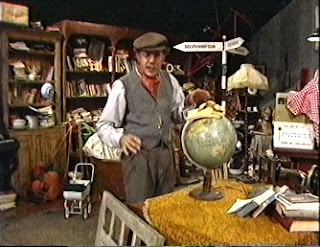
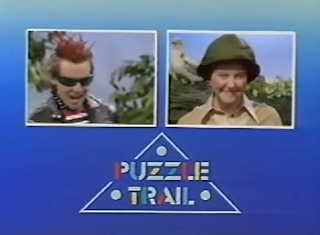






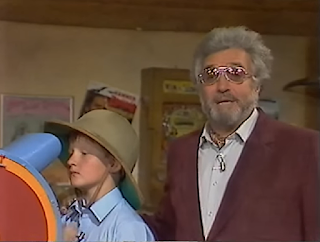
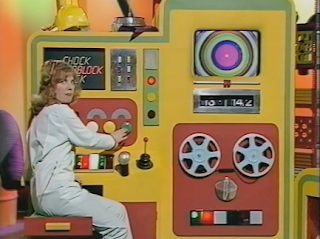
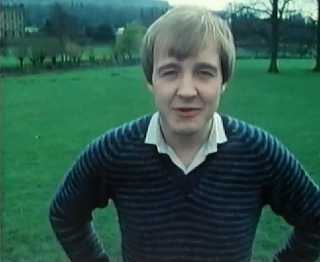



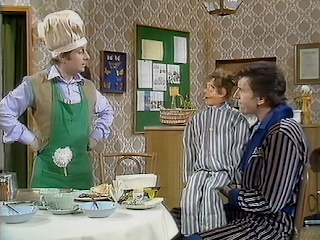
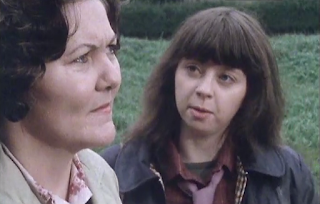










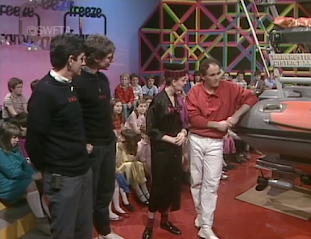
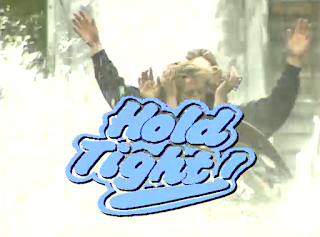











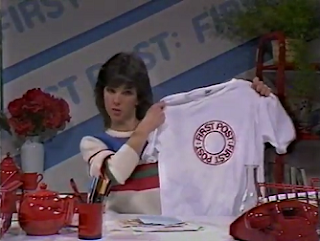
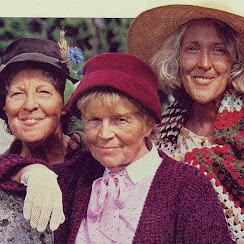

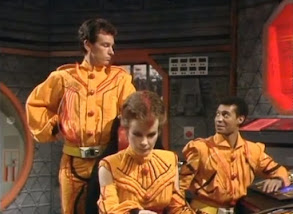




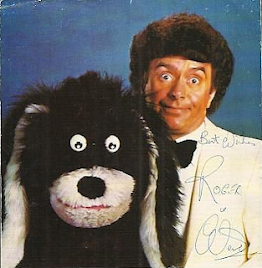




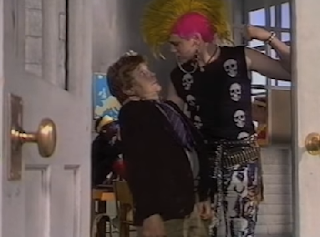

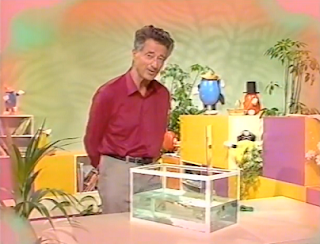




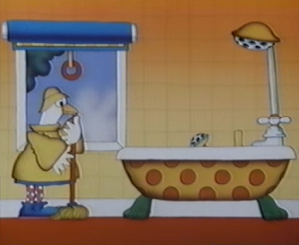




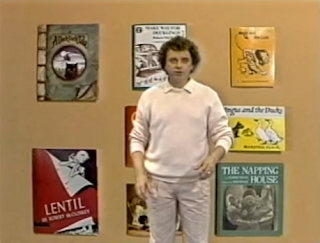
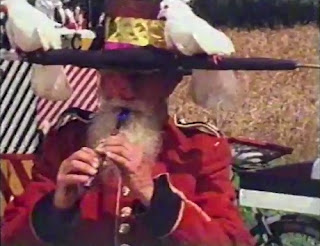

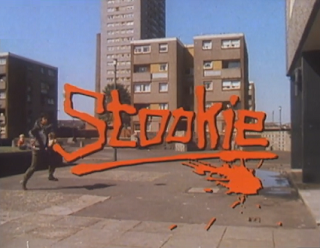
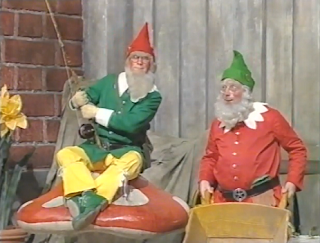
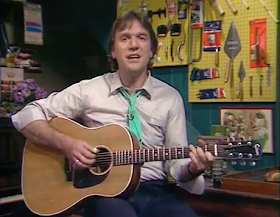


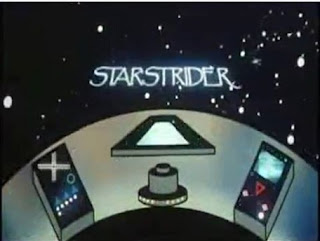
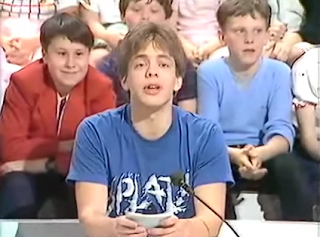










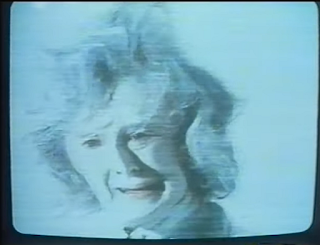


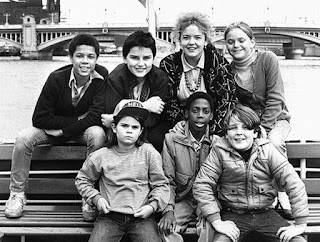






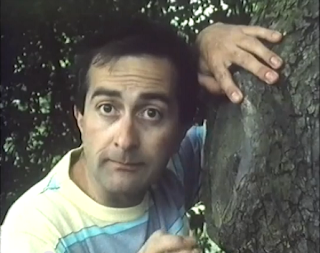












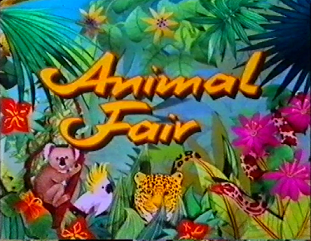
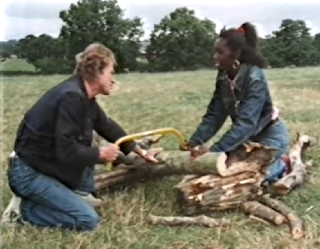













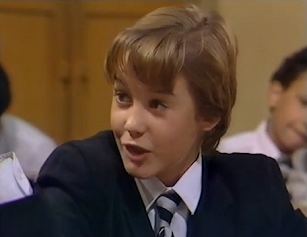



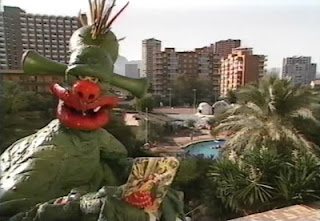
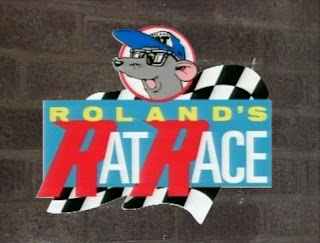






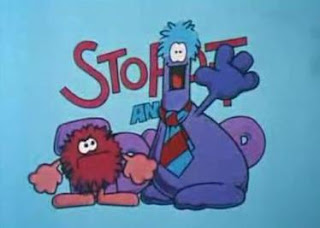




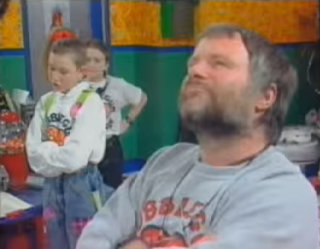


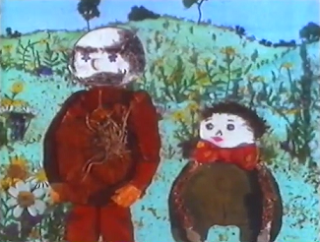


Thank you so much for this - some memories and some other things to look out. I have not long discovered Interference and like it very much, especially the collective sigh of relief when the dad walks out!
ReplyDeleteAnother show not here that I liked hugely was Why Don't You? Which had a subtitle something like Turn off the TV Set and go and do Something (?) Instead. Never found much about it online and it was before these as I remember so was likely junked.
Yes, Interference is fantastic, not the most well known programme, but nicely spooky. And I remember Why Don't You, they carried on making that into the 1990s!
DeleteWhyyyy Don't You, Whyyyyy Don't You
DeleteWhyyyy Don't You, Whyyyyy Don't You
Whyyyy Don't Youuuuu, Just switch off your television set and go out and do something less boring instead!!!
Sitting in your bedroom watching. Turn it off, It's good for me.
So Whyyyyy Don't You!
I'd given up hope of ever finding out what Princess Galaxzena was. With so many series about 1980s cartoons, I couldn't understand why it wasn't turning up - when I'd gone through the back catalogues of every animation studio going and even contacted lots of animators from the era to ask them.
ReplyDeleteThe answer? It was garbage: a minute-long segment inside a failed attempt at interactive TV, with no story to speak of. I found a 5-6 surviving episodes on Youtube and they were all the same: she lands in her UFO-like spaceship, flies across the screen (using the same recycled animation frames), collects a few objects, and flies away again in her spaceship. The artwork is quite nice in a 1960s Eastern-European surrealist type way - it reminded me of Twice Upon a Time (1983). Were there 52 episodes of it, or did they recycle and repeat them? Was it always the same format/the same "game"?
Can ANYONE pleeeease remember?... this live-action style children's TV programme that I think would have been latter 80s (though not impossible was very early 90s!)...for which I've only the following hazy clues....
ReplyDeleteFor starters,it was scary enough for younger viewers... the setting was some kind of coastal(or maybe lakeside)area, and then perhaps some rickety old shack or lighthouse in the mix.
But most distinctive of all were the "baddies"... there was some kind of secret passage underground/underwater ...think I remember something like a hidden door/hatch/trapdoor that possibly the protagonist kids stumble across in dunes/marsh/wherever ....and i THINK the baddies were some kind of human-like creatures who mmmmaybe lived (part their existence?) underground/underwater ...they had slimey ghoulish faces.
And possibly there was some way or underground passage connecting a seemingly normal building to the sea/lake/water so that they could still live some reclusive existence in the house as well.
Think there was maybe some element of the kids sniffing around, trying to solve the mystery of mysterious goings on.
And I'm picturing credits rolling with water lapping over sand ...and maybe glurgling disturbance just beneath surface (bit like when you might spot a razor-clam in sand when tide is out)
Hope I haven't muddled two shows together here or let my imagination run too wild! Any pointers would be great please!
I remember this and have been looking for it too! The grey slime sluggish creatures! What was this?!!
DeleteCould that be Under the Mountain (1981) a New Zealand kids series which had slug like creatures in tunnels of an old volcano in the suburbs of Auckland https://www.imdb.com/title/tt0202769/?ref_=nv_sr_srsg_2
DeleteAre you thinking of Round the Twist? They lived in a lighthouse
DeleteOmg Joe! That pretty much describes the exact thing I too have been on and off searching for YEARS! Although, I remember (extremely vaguely) describing these monsters as almost seaweed creatures. And there was something to do with these things riding about in a large black car, like a black cab. The kids snooping about a large house stumbled upon some secret passageway and fall down a chute and end up possibly in the sea, discovering the connection there. Does that seem familiar?
DeleteOMG!!! Emma! That is IT!!! Just watched episode 3 on YouTube and all was confirmed in the first 5 mins. I cannot explain how grateful I am. I never thought I'd find this again!
DeleteIs this possibly Under the Mountain (1981) it was a New Zealand kids drama set around the lakes of Auckland where a couple of kids take on the Wilberforces who were alien Slug people
DeleteFascinating stuff. Lots of things I remember, plenty I've never heard of and quite a few I wish I'd seen at the time when I would likely have enjoyed them. I can still hum the jingles to T.T.V and Let's Pretend, but I have been unable to remember the name of the quiz with the computer games at the end (First Class - than you!) for twenty-five years.
ReplyDeleteI remember sitting through Mag is Mog although not being able to understand a word of Gaelic. There was another series for children that predated this produced by Grampian from the late seventies called Cuir Car. BBC Scotland’s other early Gaelic children’s effort was called Bzzz!
ReplyDeleteOn the subject of regional children’s tv, I remember a really good programme relating to computing called Bits and Pieces that aired on Grampian at about 10am on a Saturday. I seem to remember it was on round about the time No 73 was on during the summer.
The one programme which I’ve never seen a clip and only seen a couple of stills from, and this was more 70s, but still broadcast into 1980, was called Playboard. Christopher Lillicrap was the narrator and centred around two puppet characters Mole and Hedge(hog). All I can remember is the Playboard tent expanding at the start as a big drum was heard beaten.
Captain Zep!!! - core memory exposed.......
ReplyDeleteCan anyone remember a series that was about a girl whose elder sister had disappeared as a baby. The sister came back and she was jealous and tried to disprove it was her sibling. Eventually found a photo of a cousin showing a resemblance, threw it away in and then, changed feelings towards her and couldn’t prove the likeness.
ReplyDeleteYes it was called the cuckoo sister!
DeleteI'm trying to track down a cartoon I saw on S4C as a child, at least I THINK it was on S4C. It was an animated series about a blue bird who constantly got antagonists by 3 short men. The series had no voices and its soundtrack was mostly melancholy saxophone music. Its driving me mad because I cant remember the shows name at all.
ReplyDeleteI'm curious about what you describe. Are you able to remember more?
DeleteI think it was broadcast around 1996. I was 5/6 years old so I cant be certain of the dates, and given that I was living in Wales, I'm not 100% the channel is correct either.
DeleteI submitted a search request on Reddit without much success. I'll find the message and copy it here:
"This cartoon, shown early in the morning (not sure which day), centred around a blue anthropomorphic bird. I'm not sure what he did, but he might have worked at a zoo. My memory tells me he somewhat resembled Toucan Sam, but his beak was shorter, like a parrot beak with a flat mouth. He was constantly antagonised by 3 short men. I remember them having big round noses and 3 red beards that covered their whole heads. They could almost be flowers. They had no mouths, and only talked with deep grunts. I think their clothes were orange, like zoo assistant uniforms, but my memory might be wrong there.
The best example of how the series went (at least I assume, I only ever saw two episodes in my life) would be that the 3 short men would always one-up the bird, leaving him annoyed. For instance, one episode had this payphone, and the bird couldn't get it to work. The three men would each take turns to use the phone, and for them the phone would work. The animation was limited. I remember that one of the men would hold the phone to another's ear, and the one listening to the phone would laugh, but the animation was done by having his head bob slightly up and down only by a few frames, and his eyes would blink every time the head bobbed. The bird would then try to use the phone, and find it didn't work still.
Another episode, I THINK, had the 3 short men either washing a car, or doing something involving water, and would keep getting the bird wet. I remember vividly a shot of the livid looking bird walking from right to left, very slowly, water dripping from him, that happened at least 4 times (one close up, and the rest long shot to have the whole bird in frame). It was a sideway shot.
I was living in a rural area of North Wales at the time. I was 6 or 7, so it must have been early 1997. I believe it was Channel 4, or S4C as it was called in that region. I'm not sure if it was a Welsh or European cartoon, or if it was even a repeat broadcast. But these are the only two episodes I remember seeing. I would love to learn the name of the series, to see it again, and try and find out how many more episodes there are.
I remember the series having no dialogue, and it would only feature grunts from the short men, or sqwarks from the bird (if what I remember is true), which would certainly make it harder to track, as its silent nature means it could have been made anywhere. I believe each episode ran for no more than 5 minutes, 10 at most, but I don't believe that. The music for the series was a simple melancholy saxophone that played a mellow jazz tune, and the show's music didn't seem to be anything grander than that. It was very quiet, mellow stuff.
If anybody knows what it could be, please let me know, as I REALLY want to identify it."
An amazing read. Thank you.
DeleteI just saw that Century Falls was added to a streaming service. I saw that the credits ran over a mask and I realised that this was a series I had vague memories of as a child and occasionally try to recall.
Then I read the synopsis, and I don't think it's Century Falls I remember at all.
I remember a spooky theme tune. I think it was ITV.
I think it was kids investigating a mystery (of course). The thing about this series was that the baddies... whoever they were, were forcing people to use their skills to help them. I remember a man with a beard being forced to write a certain number of words to a deadline or else. I feel like each episode majored on one or two of these characters ave you had to wait a few episodes to find out what happened to them next.
I vaguely remember an episode with a crucial moment inside a big tent that had been set up on the road.
And the titles maybe ran over a spooky mask.
That's all I've got. Any ideas?
Fire me a message:
three_point_sermon@hotmail.com
Anyone remember a dubbed tv serial from the 1970s similar to the flashing blade, it was set several hundred years ago in a cold country (mongolia, china, Russia lots of snow) the lead was blinded by a hot poker
ReplyDeleteWonderful article, I need up here trying to track down a vague 80’s memory that turned out to the the BBC show Box of Delights that didn’t make your list. How’s this for a vague clue though - while reading pages of articles on old shoes I dislodged a memory of a show, 80’s for sure, possibly BBC. Show was centered around a group of children, pretty sure one of them at least was an alien or a time traveller or some equivalent. Also one of them was a punk, pretty sure, maybe the alien. Other kids became his friend. But then they were all in danger. The scene that came rushing back to me was of them fighting off an attack on a play ground or park area from the top of a climbing crane / slide thing using some kind of advanced rapid fire laser weapon. Crazy how the Mind works - was this a real show or am I remembering some composite of other stuff?
ReplyDeletewas this Aliens in the family?
Deletealien guy looking for Solita?
Anyone remember a kids' science show that was on Channel 4, probably on Sunday mornings, around the end of the 80s/early 90s. It had live action sections presented by the astronomer Heather Coupler (although isn't mentioned on her website) but also featured sequences with an animated neon space-girl. You could write off for a folder full of activities (which I did, but the folder's long gone).
ReplyDeleteWhat a great list! Stirred a buried memory or two, reassured me that at least someone else remembered Up Our Street and Running Loose, and...well, as of this date, we can still say that Gilbert's Fridge cannot be praised often enough.
ReplyDeleteOne you forgot - the early '80s ITV Watch-It-era "Home" (remember the theme song? "Home, on the other side...") They called it "a story about kids in trouble" - and, well, it was much more suspenseful than Running Scared.
Hello, would anyone be familiar with a show for kids, say 14yo, that used to be on TV about a week or two before Christmas, most years around 85??
ReplyDeleteIt always used to be on during the day (one hour long it felt like). i dont recall commercials, but would say i would have been a bbc2 program... the only thing i recall is it had an odd Christmas theme, almost felt like a modern day fable or scrooge deal. i believe there was a boy wandering around a city/town... i think about it once in a while, and make failed attempts at trying to find it.
Enjoyed the list.
Thanks
Box of Delights?
Deletei checked that, but unfortunately now. the show i was looking for was set in the 80's. thank you
DeleteThis sounds like Quincy's Quest featuring Tommy Steele
DeleteIs it the Children Of Greene Knowe? https://youtu.be/PaypQOsBwJ8
DeleteWas it Teabag? I’d completely forgotten about it until I saw this comment.
Deletehttps://m.youtube.com/watch?si=x1dhNUAsr0vJ8l0S&embeds_referring_euri=https%3A%2F%2Fwww.google.co.uk%2F&source_ve_path=MTM5MTE3LDEzOTExNywxNjQ5OSwyODY2NCwxNjQ1MDY&feature=emb_share&v=yHfJn2Q3OMo
Hello sorry to bother everyone do you recall a Live action Kids Drama about a school sports club - I want to say it was pentathlon where each kid in the group specialised in one of the events, led by a girl who was good at show jumping and moved to a "comprehensive" I think - maybe the school bully was the one good at the cross country section or swimming? I want to say it was on BBC1 in the late 80s and probably based on a book.
ReplyDeleteSweat. Australian TV show?
DeleteIt was called “Who Sir? Me Sir?”
DeleteGreat list! I'm trying to find out about a programme that ITV showed in the mid 80's. It was simply called 'Billy' which was about an Old English Sheepdog who lived on a narrowboat. I can't find anything online about the show but I know it existed. Help please! Thanks, Martyn.
ReplyDeleteI can't find any programmes called Billy. You're not getting mixed up with Benny (see above), are you? The dog in that started off living on a barge...
DeleteThanks Ben but it was definitely Billy. The signature tune was a jaunty piece played on an acoustic guitar. I can see it being introduced by Bob Carolgees or Matthew Kelly around 4.10 in the early to mid 80's wedged between Teetime & Claudia and Emu's All Live Pink Windmill Show. Oh well, I'll just have to keep searching!
DeleteCan anyone remember a School educational program, late 80’s/very early 90’s. My memory is very vague but the opening theme tune was ‘Dance of the Knights’ (the apprentice theme) and there was a boat, possibly a Danish long boat or something like that, being rowed across a sea? I’ve looked everywhere for it but had no look. I remember us all sat in the school hall, watching the schools only TV. One of those on a big stand with wheels and in a box that the teachers would lock. I can remember Geordie Racer, Through the Dragons eye
ReplyDeleteSounds like it might have been Breakthrough:I’m sure they used that theme music.
DeleteCan anyone remember a children's TV series in the 80s I think where the end credits showed a car being driven off a cliff and the car falls towards the sea, I think towards The Needles at the Isle of Wight?
ReplyDeleteI found the cartoon I was talking about. It was Ric the Raven.
ReplyDeleteDoes anyone remember a show in the mid/late 80's ( I think) which showed opening scene of a aerial view of a cul-de-sac and I think a house where either it housed an alien or if becoame possessed by an alien creature or something? I seemed to recall the sofa coming alive and eating someone. Im sure it was on in the evening at the weekend but I dont reall much else. I think it was acomedy and I think it was played over several weekends. Thanks
ReplyDeleteCan anyone help me remember a science-y programme on BBC? late 80s I think. There were about 4 on the regular team of presenters and they covered biology/body stuff, light/waves/physics and things like,thst. I particularly remember a section in one episode on how to be a spy, I think - listening devices, secret inks and that sort of thing. Ring any bells with anyone?
ReplyDeleteCan anyone remember a show from 1980s. It was (possibly) bbc kids british drama about a young girl who had a violent father. He got angry and hit her with a belt when she brought a rabbit home.
ReplyDeleteMy son is trying to find an old tv programme in uk that fir some reason was shown at school, mid 1980’s. We think it was the Sandman, a hold coloured male with fair/blonde hair who opened his mouth and no sound came out. We found other programmes called the Sandman but not the one he is trying to find. Any help would be gratefully received thank you
ReplyDeleteIt was called Five Children and It
DeleteCan anyone remember the name of a TV Show where a man who wore sheepskins a bit like Conan was blinded by a hot sword from a fire and had to go on quests, he always had bandages over his eyes this was either late 70s or early 80s, sorry about the lack of description I am also getting older.
ReplyDeleteTIA
It's called Michel Strogoff, made in 1975, starring Raimund Harmstorf. There are several other TV and film adaptations of the original novel. Wikipedia has more info.
DeleteWhat about Runaround or Kizzy?
ReplyDeleteThird paragraph into the article: "N.b. To make this list, a programme's original broadcast had to come solely between 1980 - 89, anything which started or finished a millisecond either side of the decade was not eligible."
DeleteHello fellow kids of the 70s and 80s. Please: what was the science-fiction puppet show and the main ship was an X shaped craft. Didn't run for very long, maybe one season. X may well have been in the title. Thanks in advance to anyone who knows!
ReplyDelete
DeleteStar Fleet is the show you are describing. Also nicknamed as X-Bomber
What was the ITV show that had Too many Broken Hearts playing ,while the 80's equivalent of CGI hearts scrolled across the screen ? It has been bugging me for years . I don't think it was a Jason Donovan pop video or anything like that .
ReplyDeleteFor years, I've misremembered an ITV show called Jellyvision, I might have actually been remembering Jellyneck. Annoyingly, there's nothing on YouTube I've found. I also remember Erasmus Microman, in fact the son of one of my mums friends worked on that. Likewise, nothing on YouTube.
ReplyDeleteNot 80s but I'm also hunting for the episodic versions of Billy the Fish and The Future Adventures of Billy the Fish from Channel 4, 1990 &1991
Can anyone remember a TV series that was on before / after blockbusters on a Saturday or Sunday evening. It was about some people trying to survive on either a hostile planet or earth after it was invaded by aliens. I have a really strong memory of watching it... But no details. It's been bugging me for a long time. Probably early 80s
ReplyDeleteWas it The Tripods? I checked IMDB and it was on Saturdays, but it was 1984-85. I was sure it was earlier in the 80s so that surprised me. I read the books between seasons. Anyway, yeah, Earth was controlled by these giant three-legged metal aliens, and some kids were trying to organize a rebellion. It was actually very suspenseful, I'd love to see it again myself.
DeleteAnyone remember a programme which included a round green blob like creature (I think with one eye) hanging from it's arms that kept shout "Brain...Brain!" it's brain I think was in a jar next to it...possibly on a space ship, in the basement, or could have been a science lab...voice sounded like it was done by Ken Campbell. Can't remember much else. The blob appeared periodically between other stuff. Could have been a quiz/puzzle show like the Adventure game...not sure. I just have this character so clearly in my mind and NO ONE remembers it.
ReplyDeleteI’m trying to remember a series I think eighties or early nineties based where there was a beautiful moat and also remember there being flooding and a great amount of snowfalls, too! Did think Box of Delights, but I don’t think it is that.
ReplyDeleteCould well have been The Children Of Green Knowe.
ReplyDeleteReally good list. Weirdly enough I could remember most of the theme tunes to these shows, even though I couldn’t remember much about the shows themselves. A few I couldn’t see in there but remember…there was a show in the late 80s called “The Album,” which I don’t remember much about other than the music at the beginning and some of the characters. “Knightmare” was a classic but perhaps too memorable for this list. I recall a series called “Teabag,” which had various sequels and spin-offs, I think the main character had missions to collect letters or something and T bag and her assistant T shirt would try and stop them.
ReplyDeleteThere were cartoons not on the list, such as “pigeon street” and “sports Billy.”
There's really not much about The Album out there that I can see. That's a bit odd for a programme from the late 1980s.
DeleteTrying to find out about a show I think from the 80s, which involved park rangers, in some quite profound and realistically portrayed situations, including having to catch a dog with rabies that had been illegally transported to the UK from France, and a man attempting to blow up a nuclear power plant.
ReplyDeleteValentine Park?
DeleteThank you so much for this article. Does anyone remember Playhouse, Jamie and the magic torch, You and Me or Beat the Teacher? Loved these!
ReplyDeleteBut where's Channel 1,2,3,4,5?! I know that there was a educational show called " Channel 12345"?! I watched it around 1987 or maybe 1989 max?! It was a show that contained mini segments or plots, I remember a spaceship pilot of some kind. I remember that it was sung by a woman in a kind of haunting canopy voice and with 1,2,3,4,5 and it ended with whooshing sound etc. I know I'm not crazy and the show did exist but maybe very limitedly but I really want to see or find information about it again. Can anyone else or has anyone seen the children's show: "Channel 1,2 ,3 ,4 ,5"?!!!....
ReplyDeleteLooks like there was a show by the same name being shown on Australian TV in the late 1980s. But I can't see anything to show it was broadcast in the UK.
DeleteHi, does anyone remember a kids educational series about the black death. I think one of the children died in the end. I've never forgotten it but can't remember the name and have had no luck finding it online. I think it all revolved around one family. I definitely remember seeing someone with the masses under thier armpits. Sorry odd thing to remember!
ReplyDeleteI remember watching this as well. I've done some digging and it appears to be The History Trail: Plague!
Deletehttps://genome.ch.bbc.co.uk/97462d17295841f69d94a35ff1410a64#:~:text=10.38%20The%20History%20Trail%3A%20Plague!
Hi all! In in need of some help finding a 'movie' (might just have been a 20-30min show) I rented as a kid in the early 90s in the UK. It was narrated and either live action or stop frame animation. The story was about I believe a travelling circus of anthropomorphic vehicles that were travelling all in a convoy (I think up a mountain) when a storm hit. Scattering them all over the area. The story then spends the next day going around finding them all. Stand out characters for me was some screwdrivers with eyes and wheels finding each other out of bushes. Crazy sounding I know! I did find a clip on YouTube about 10years ago but its been lost and I cat remember its title obviously. ANY HELP WOULD BE MUCH APPRECIATED!
ReplyDeleteCHIPS' COMIC!! Thank you so much! I've been trying to identify what that show was for years. I even work for Channel 4 now and I still hadn't been able to find out!
ReplyDeletePlease get in touch if you have access to their archive, it would be very helpful!!!
DeleteThere was a programme in 1983 shown july august time on citv called either 'New frontiers' or 'Final frontiers' it had a catchy linn drummed type theme tune and it had an older host who looked like william g stewart.
ReplyDeleteIt was a science and technology programme on around 4.30pm for kids and older teens, it ended just before blockbusters started and was on for 6-8 weeis. When it ended the presenter said it would be back the next year, but it never did come back, it was quite good and showcased innovations in tech from that time such as cd's, the fairlight cmi, the space shuttle and computers and email etc.
Do any of you remember this?
You forgot to ad Chocky with the non corporeal being who's voice was a harmonizer over driven glitchy partials effect very otherworldly and she was in his head and laffed at out cars tech which angered the main character lol
All good stuff.
Hi nostalgic folks!!
ReplyDeleteQuick question, does anyone remember the name of the show which was on cbbc mid to late 80s. It consisted of skits and I remember vaguely about pantomime horses and a chicken shed with talking puppet chickens!! 🤪🤣
For years I’ve been trying to remember the name of the show but never anywhere!! Enlighten me please someone, thanks in advance!!
Great content Ben!! 👍🤗🤝
ReplyDeleteI was born 1981. I have a vague memory when I was very small of a programme in which creatures came out of the sea and slid along a beach. Nearby there was a child watching TV and the approaching monsters caused the TV picture to break up into static as they got closer. Under The Mountain seemed to be the creatures I remember, but there is no such scene with TV static in any of the episodes I’ve just watched. Maybe my memory is mixing two programmes? Anyone recall a programme with the TV picture turning to static as things approach? Scared me so much back then.
ReplyDelete